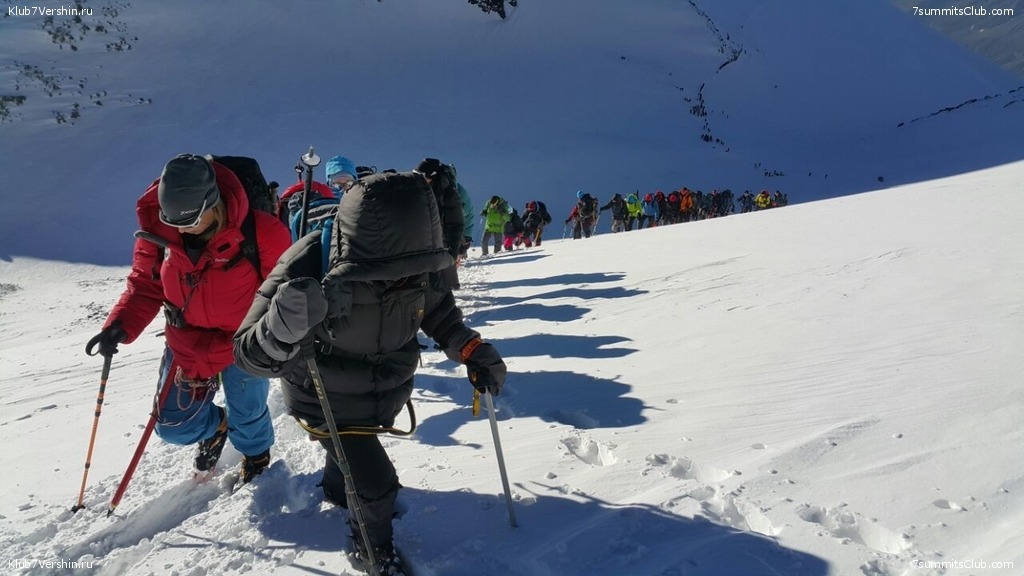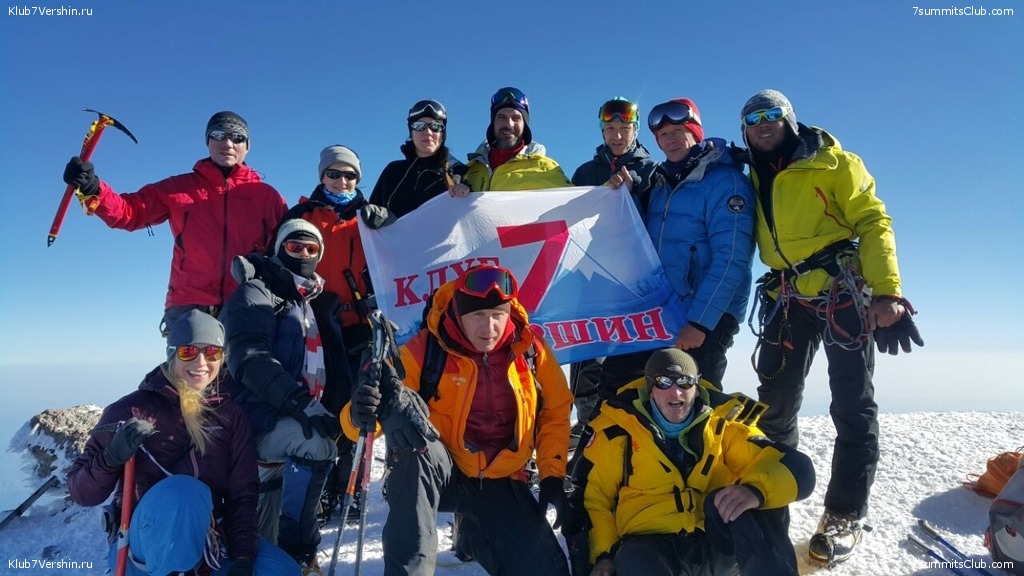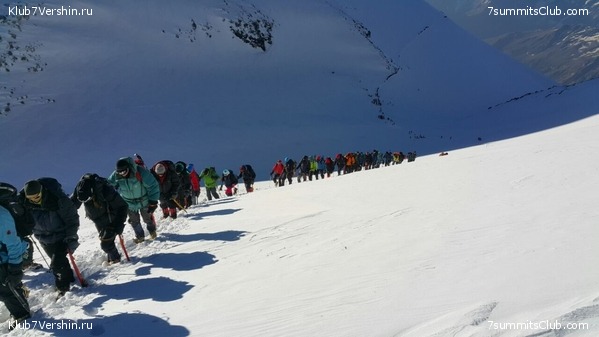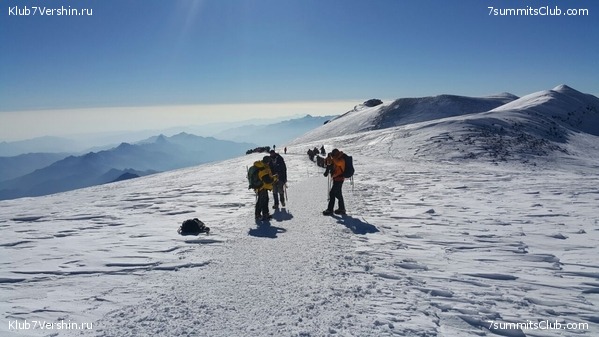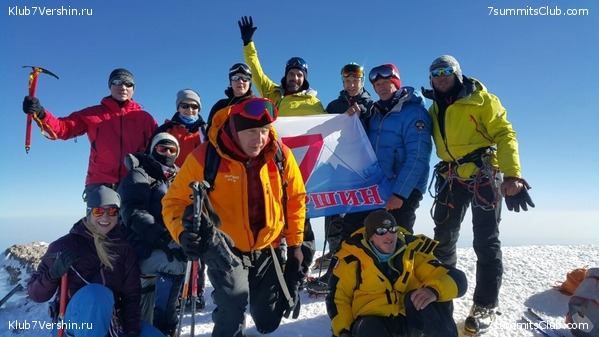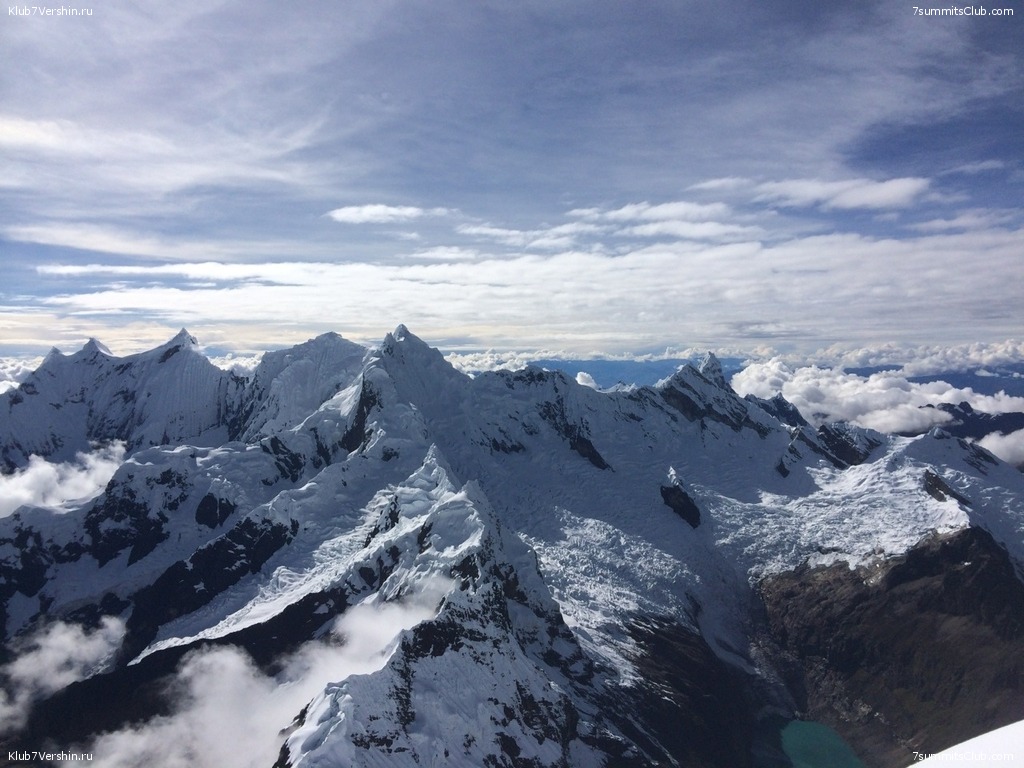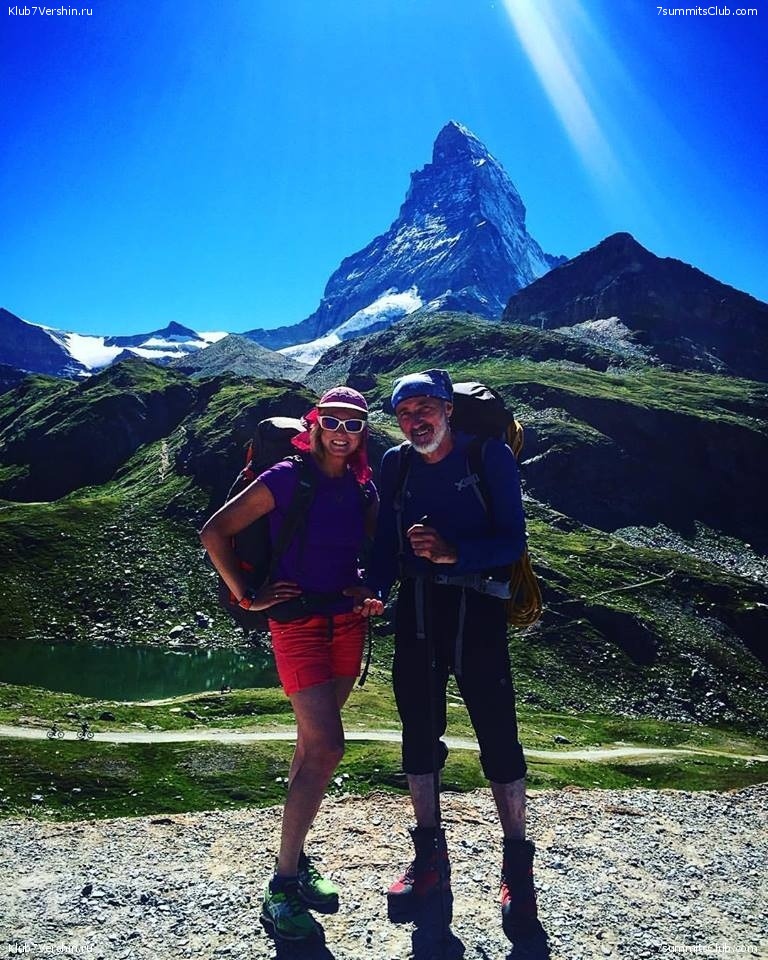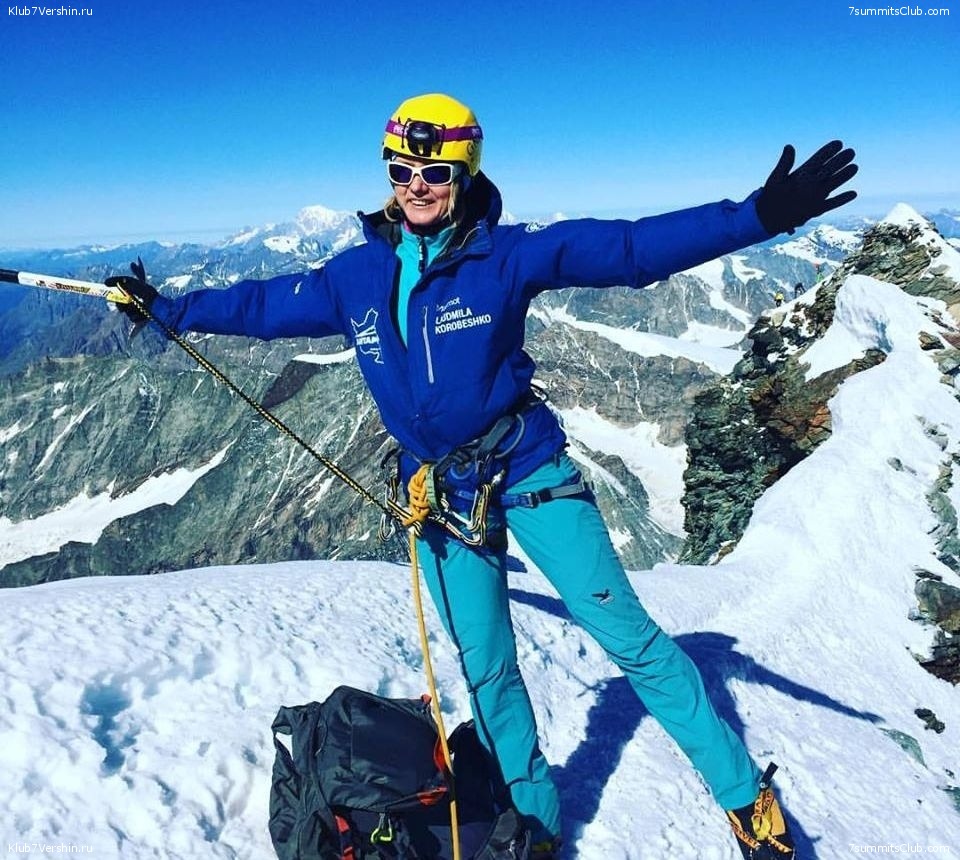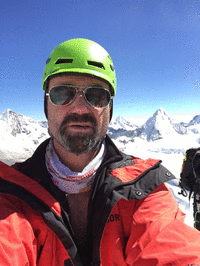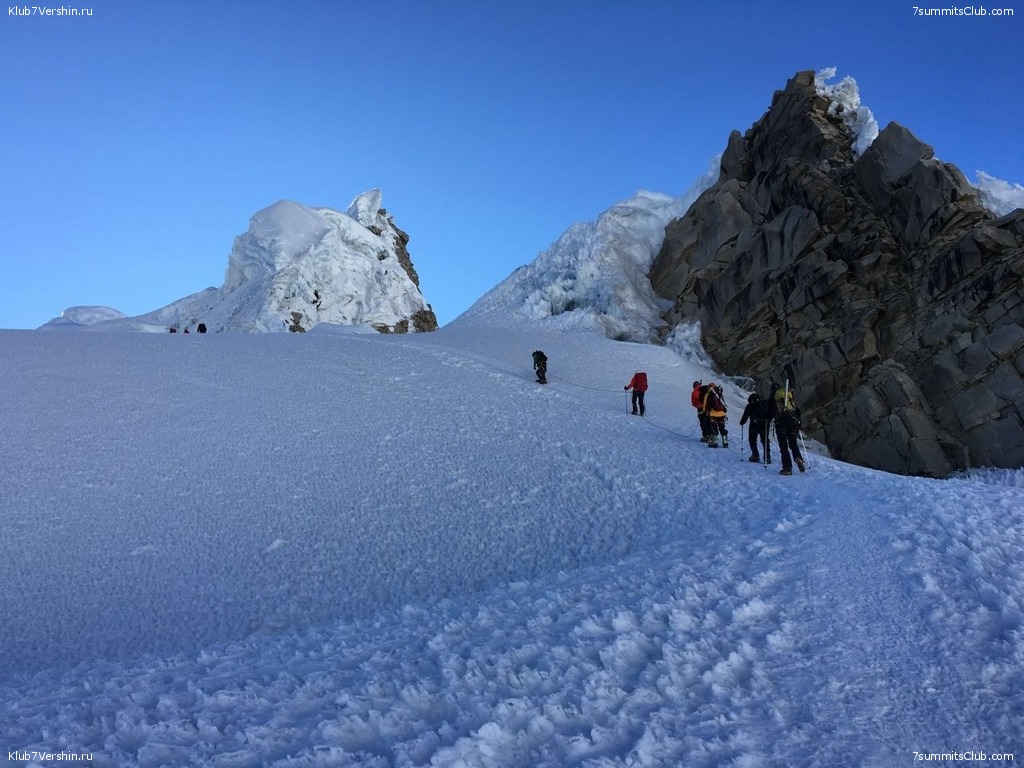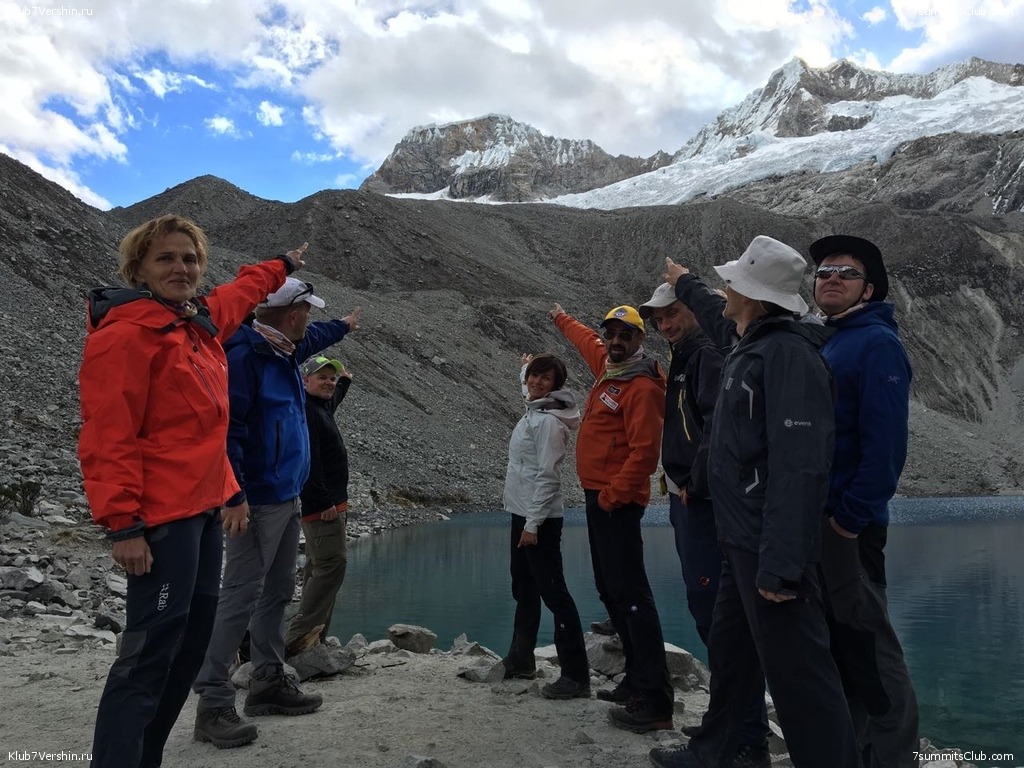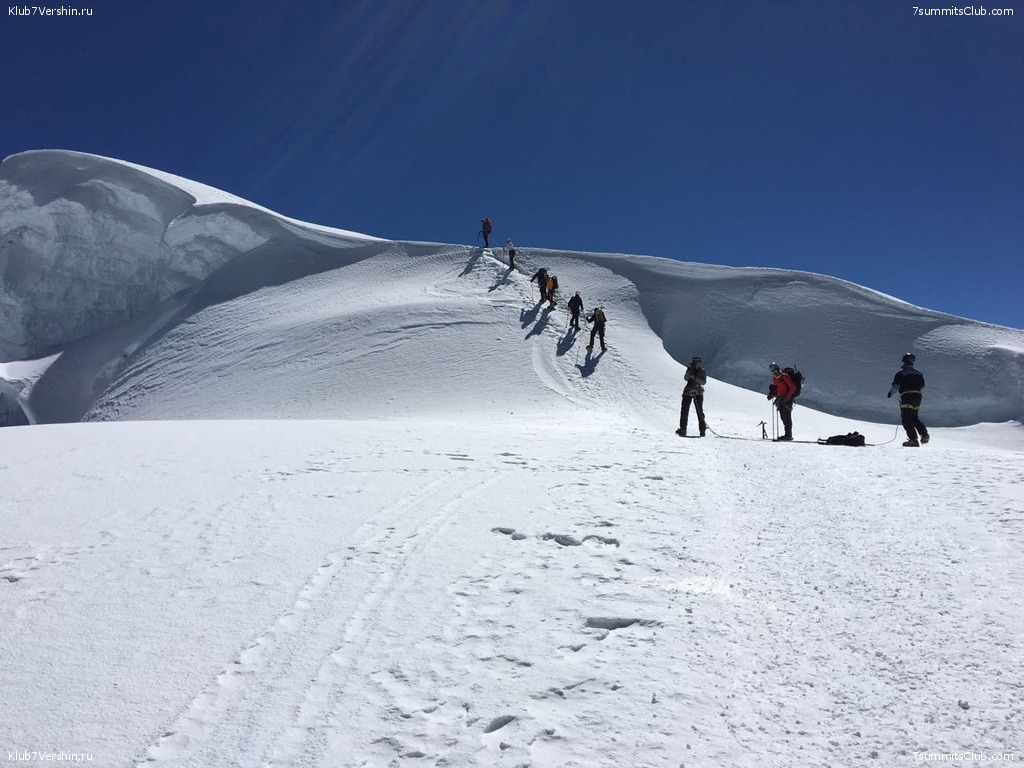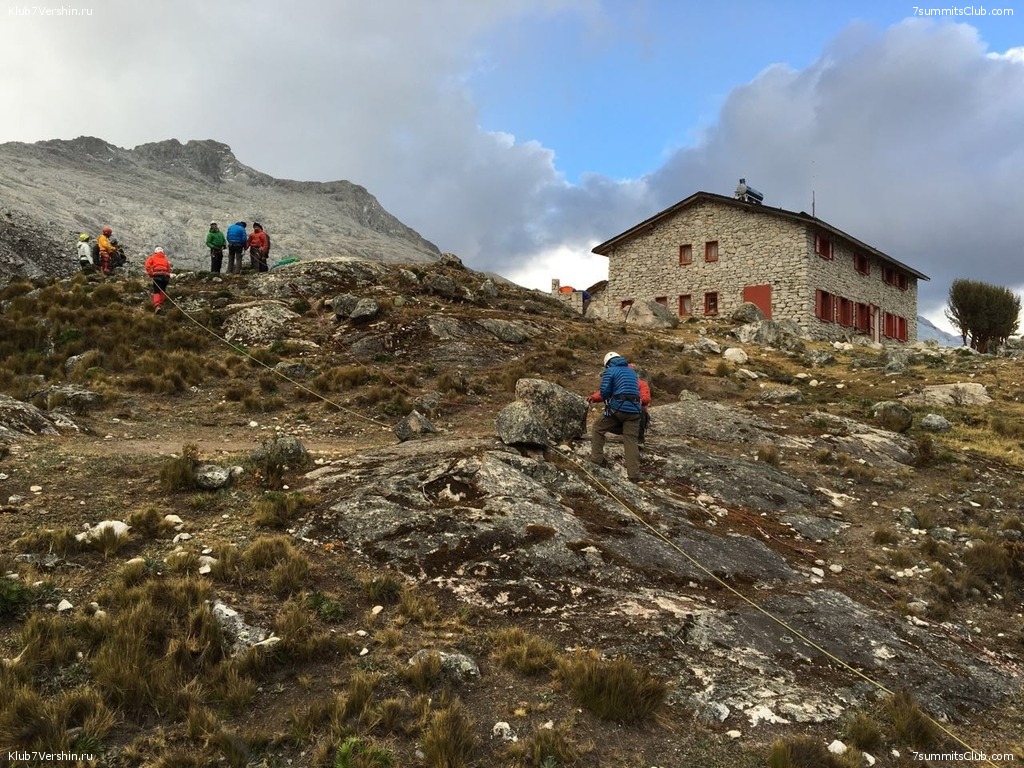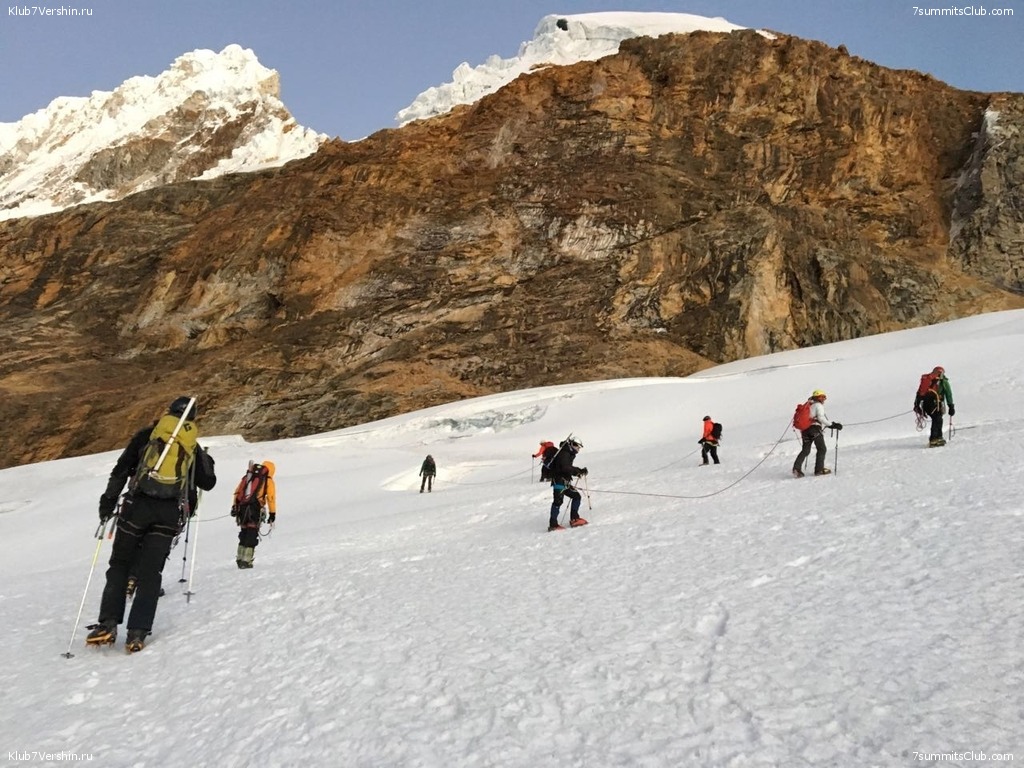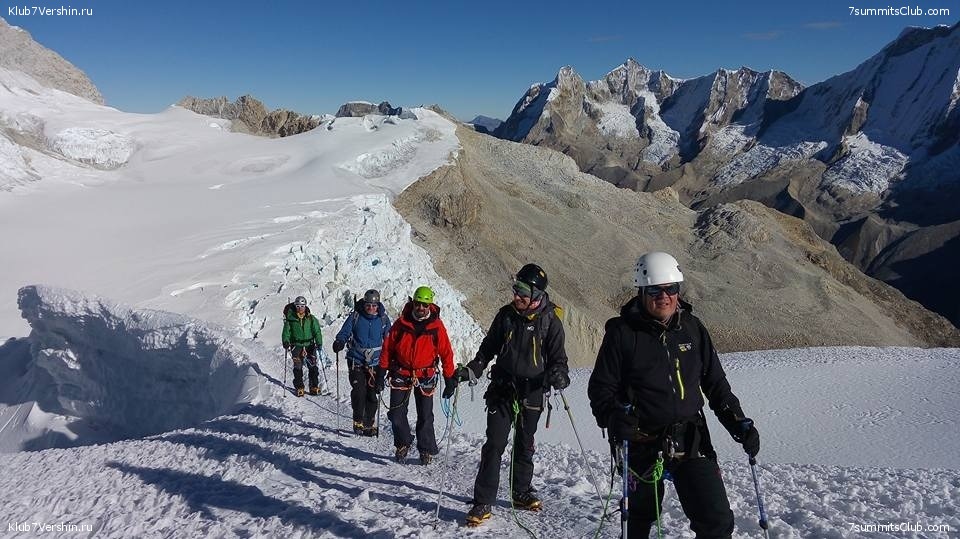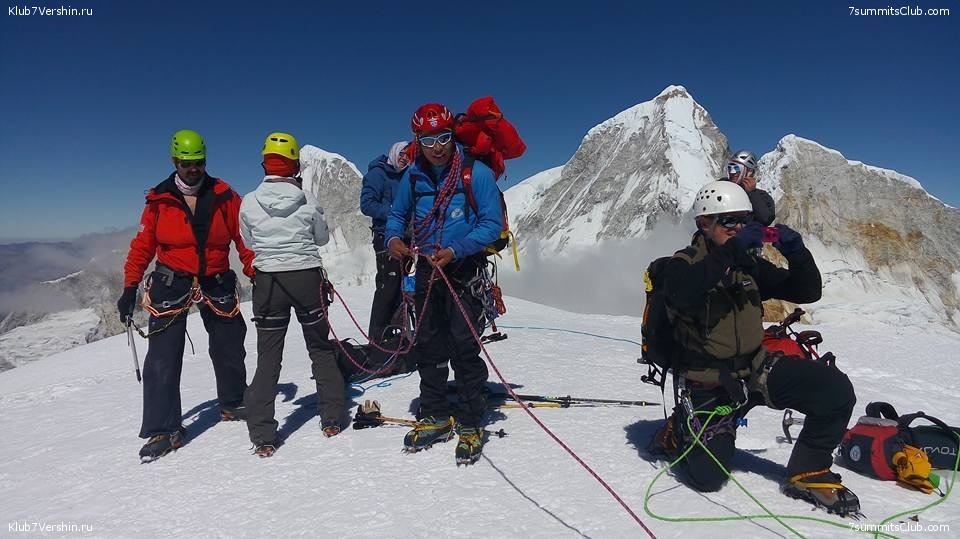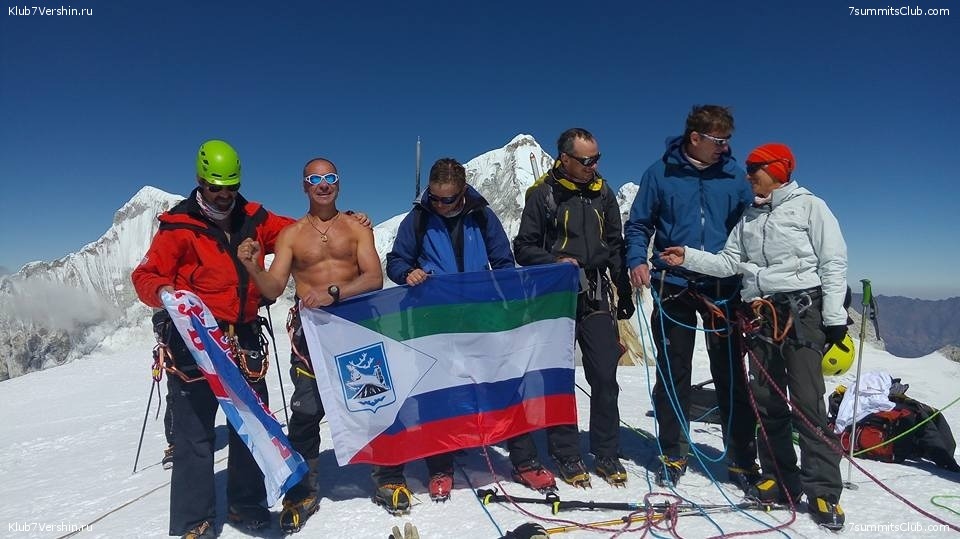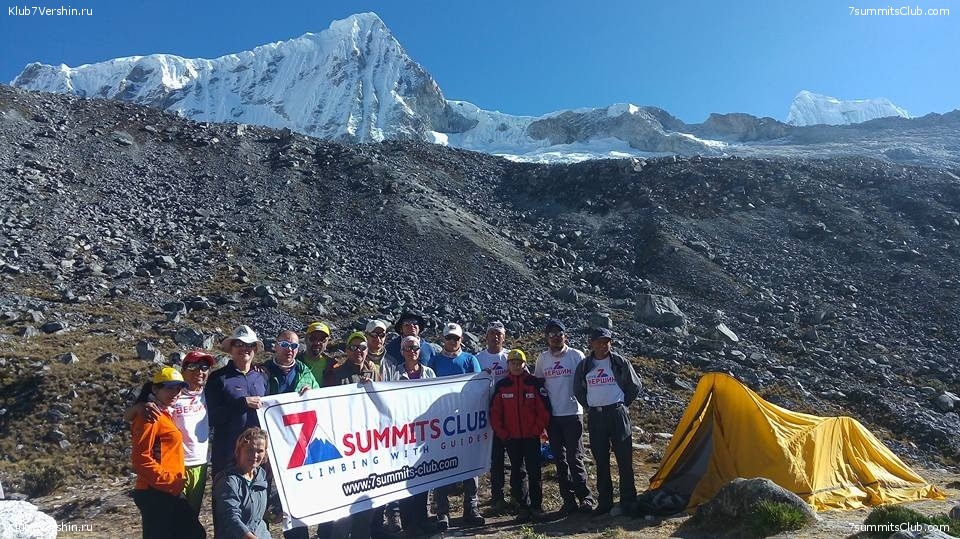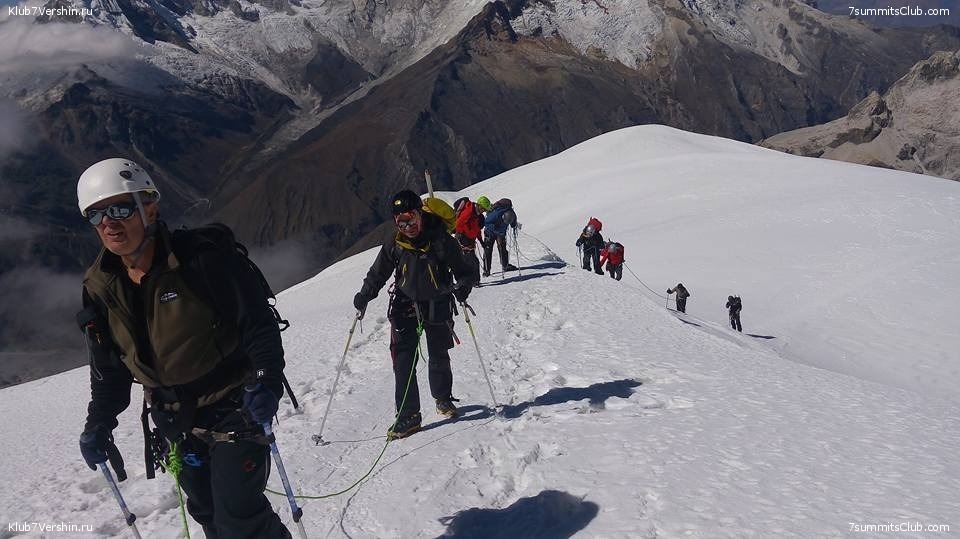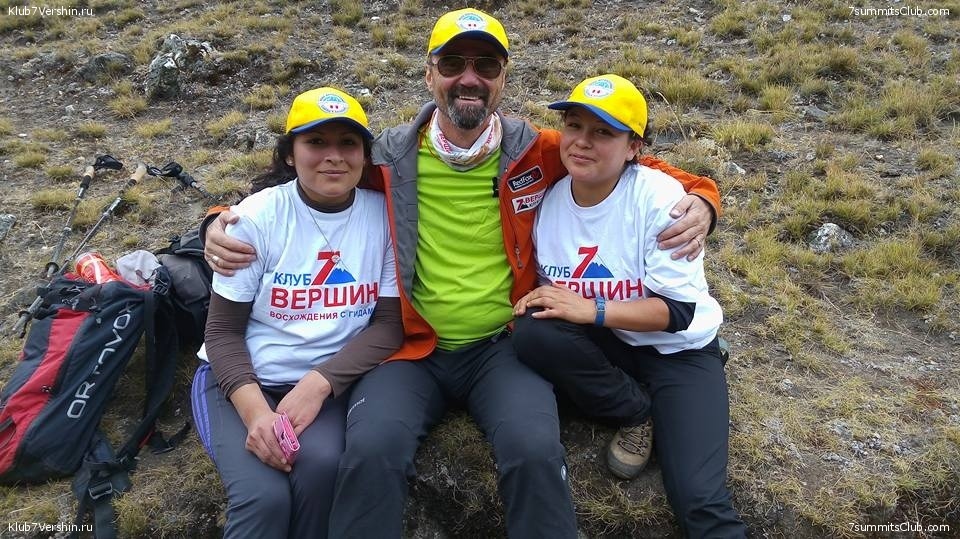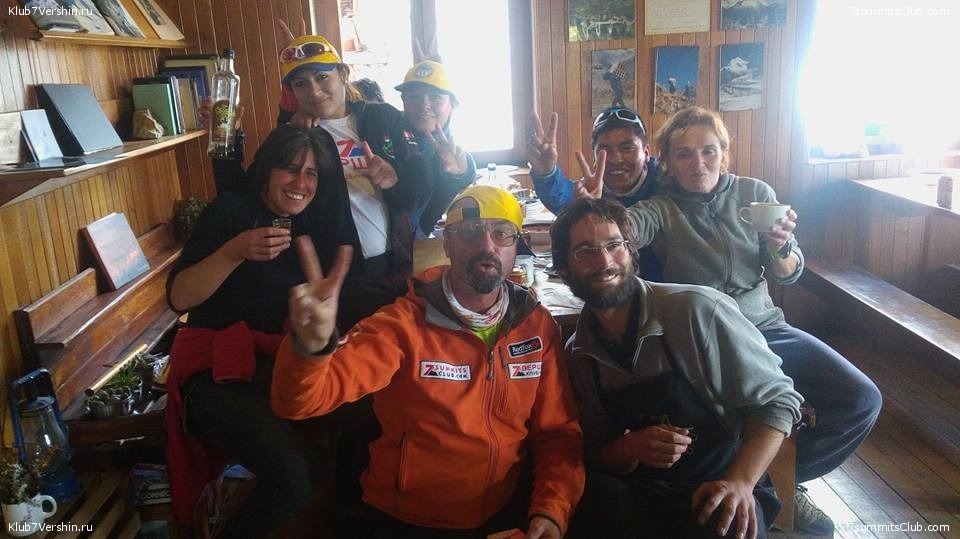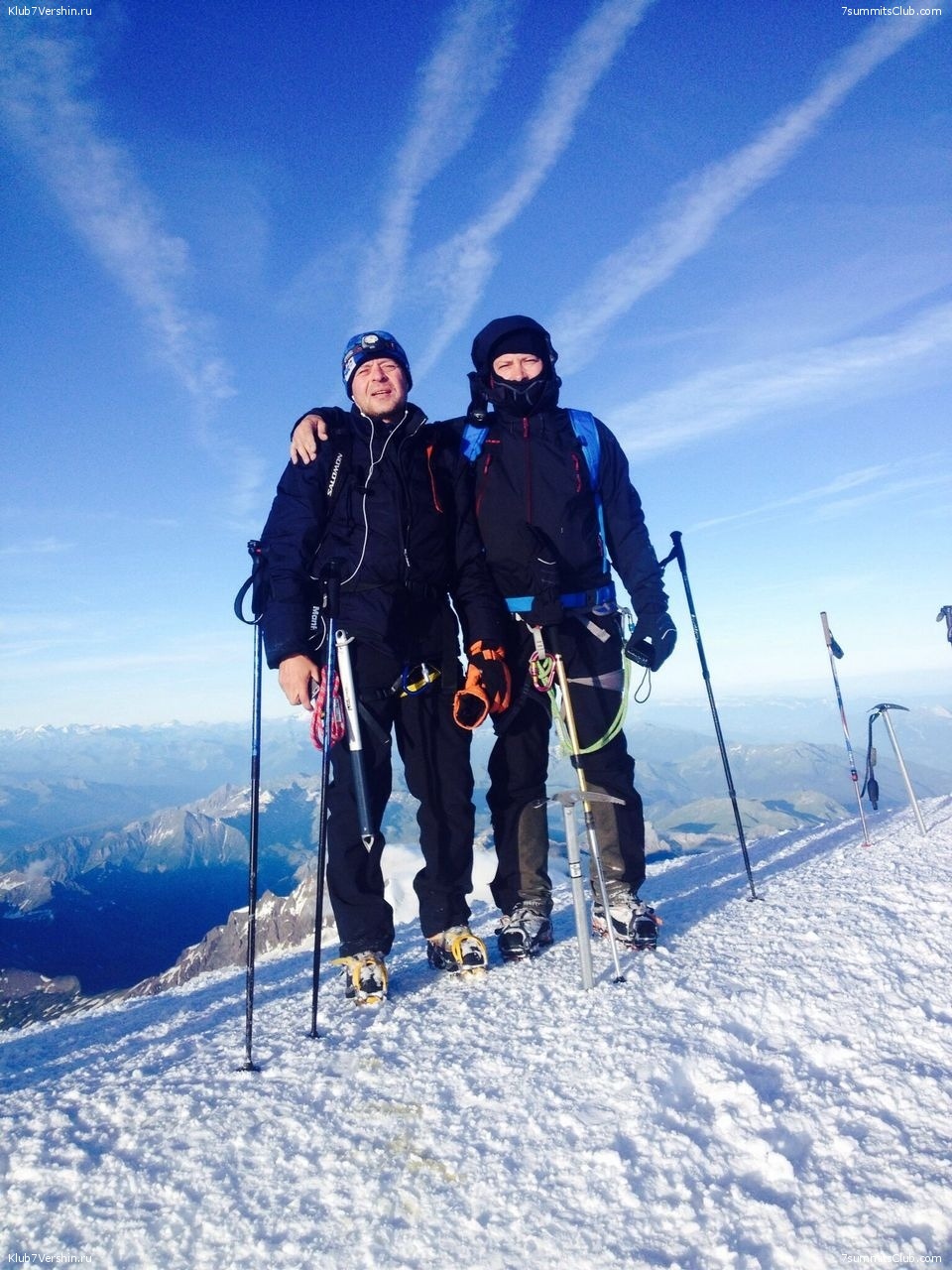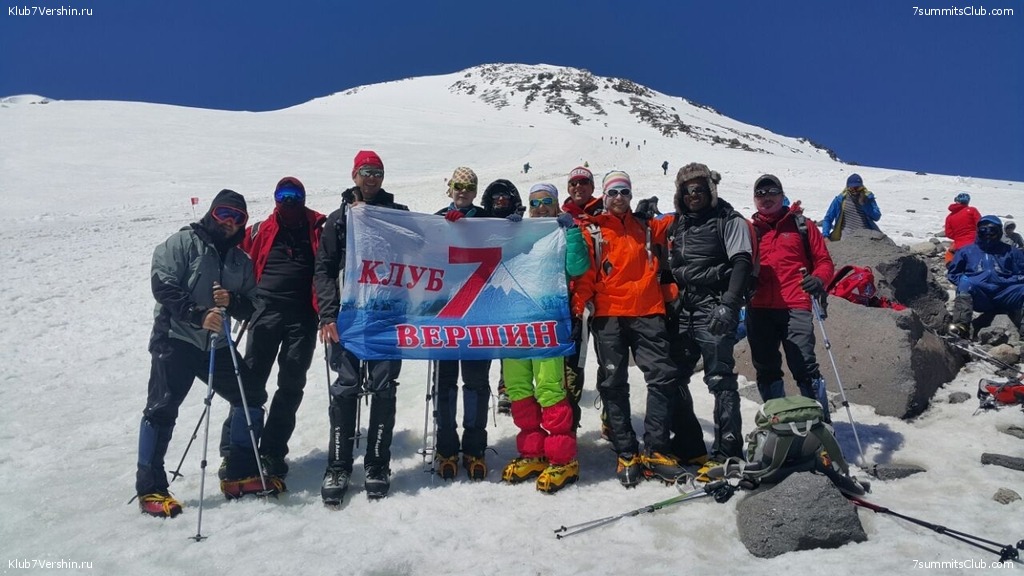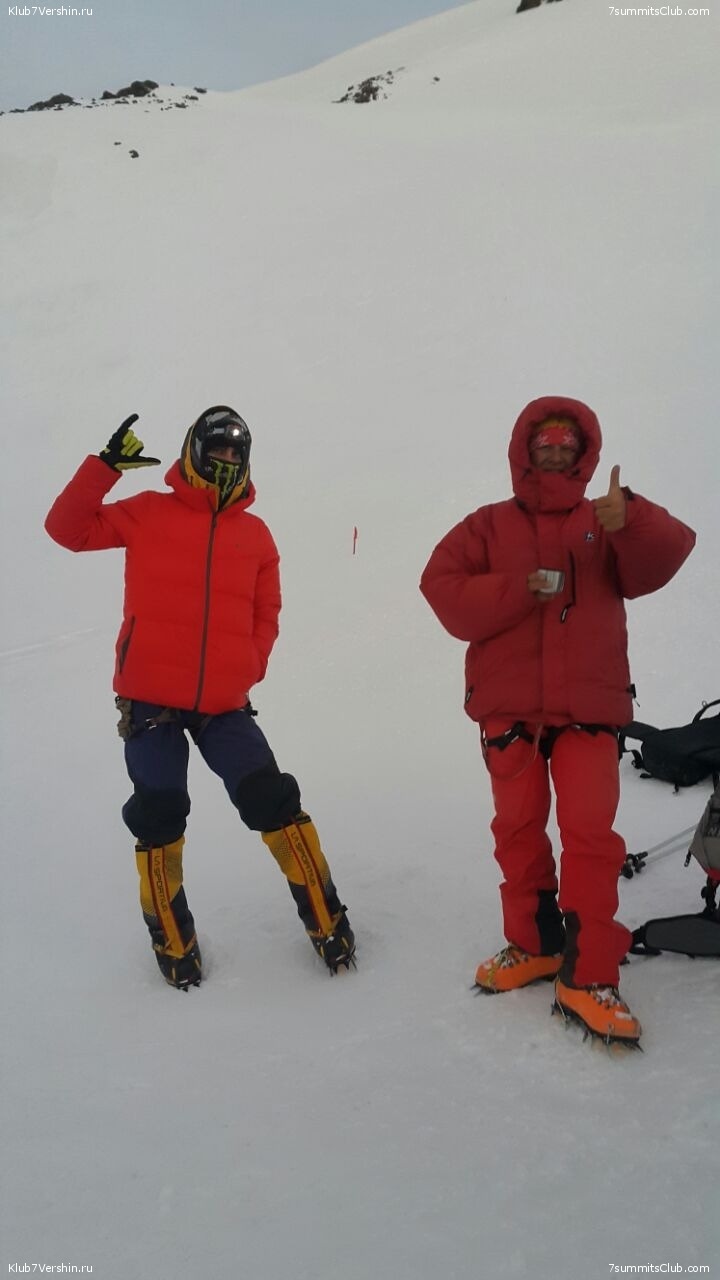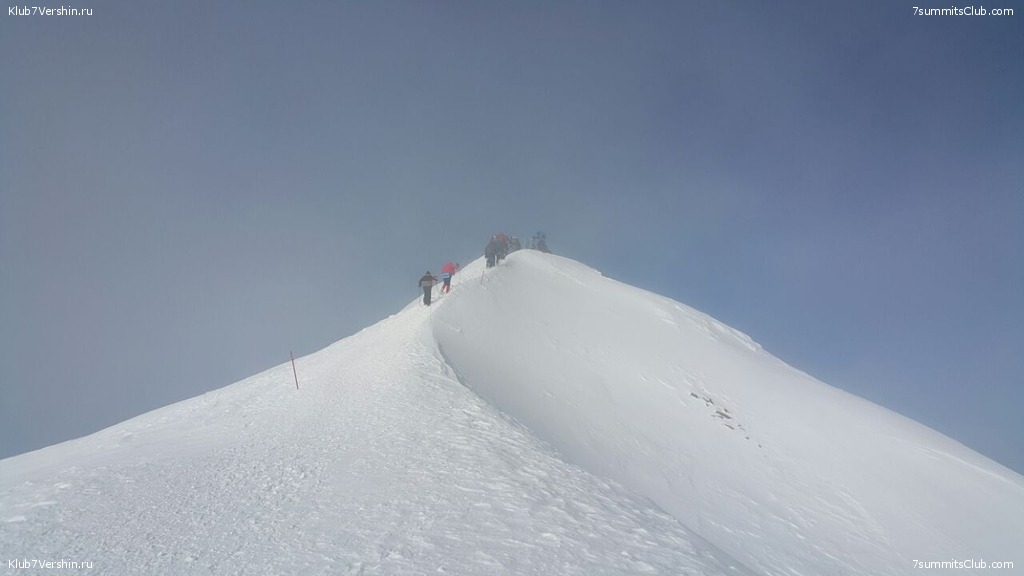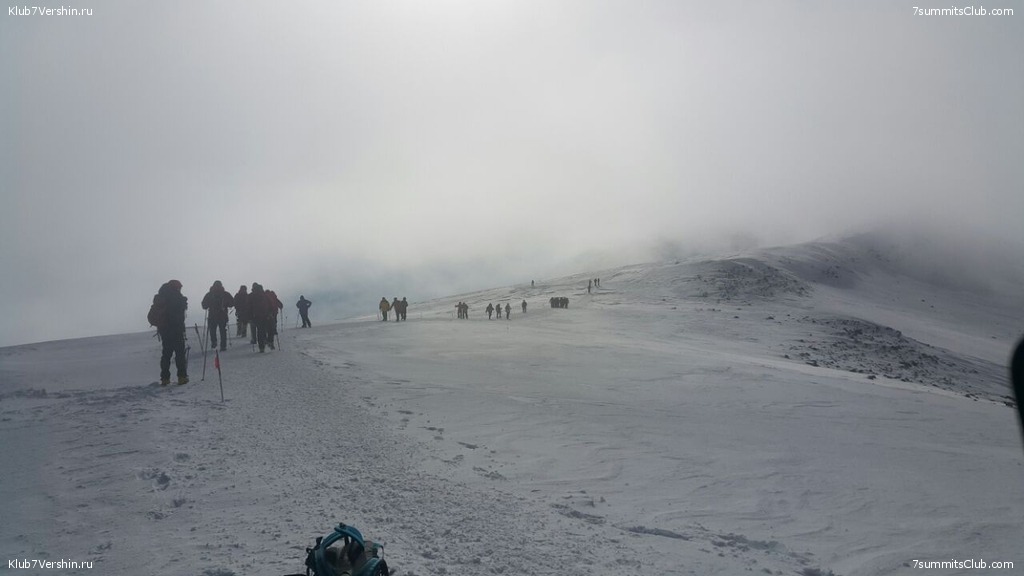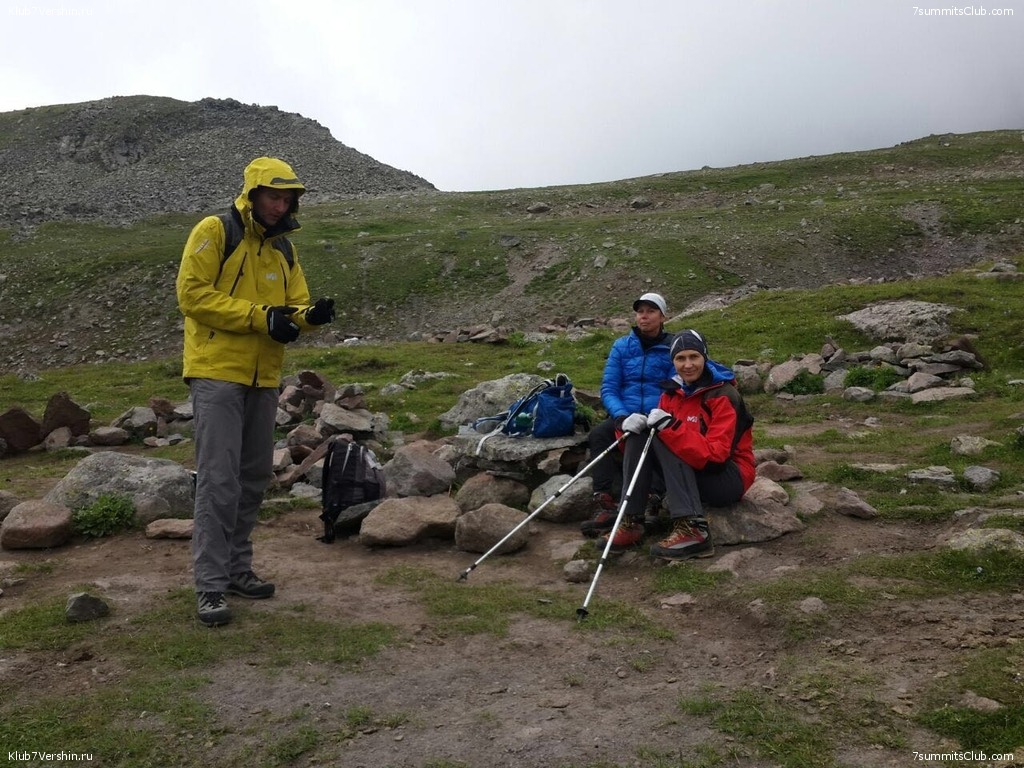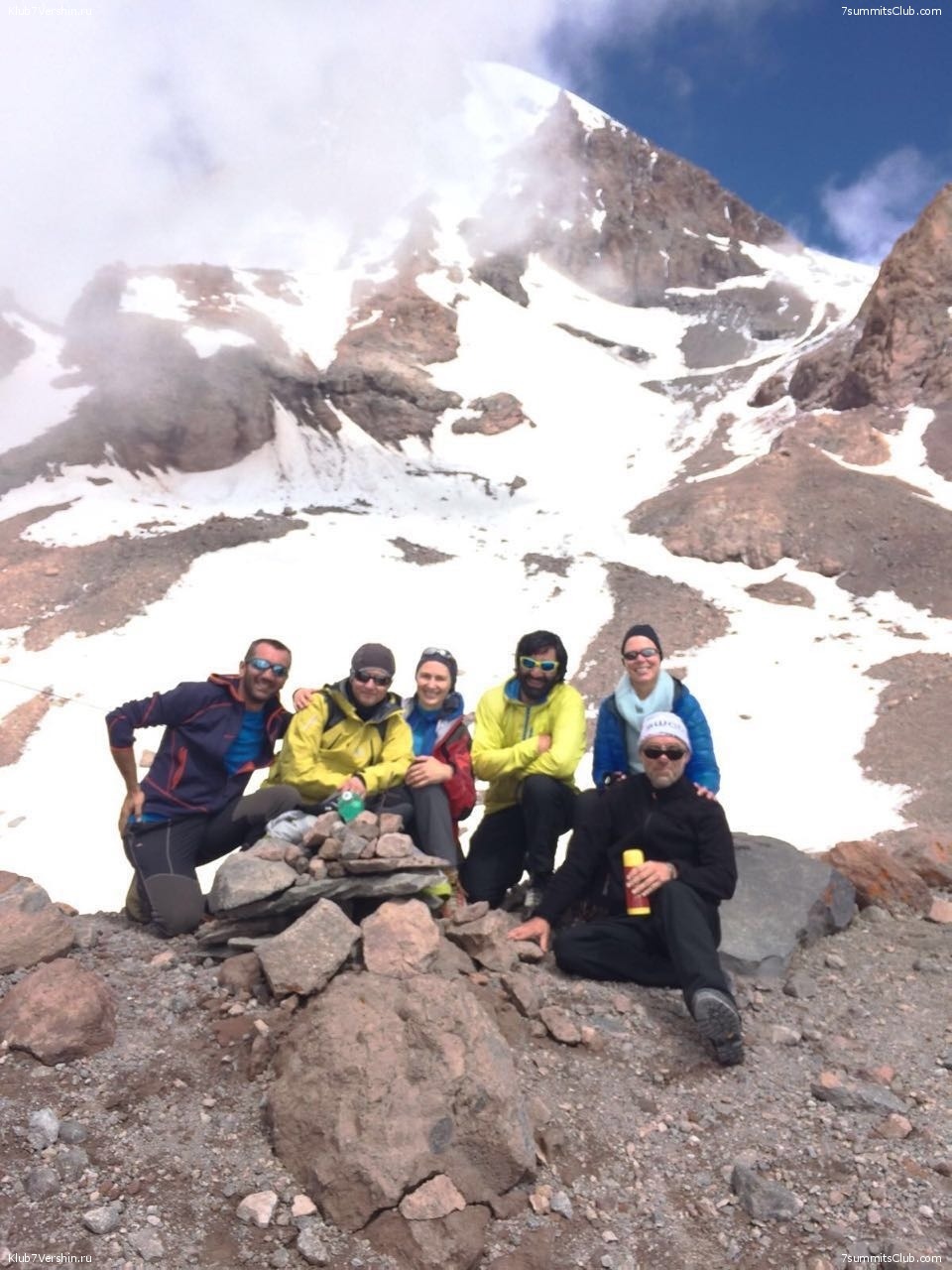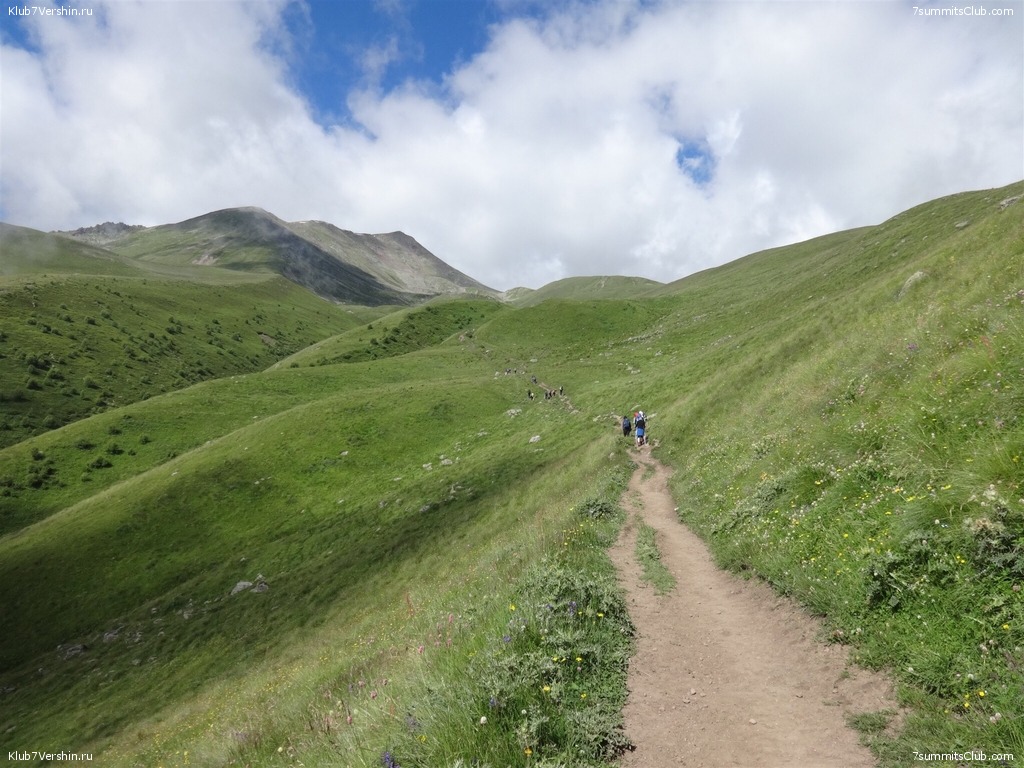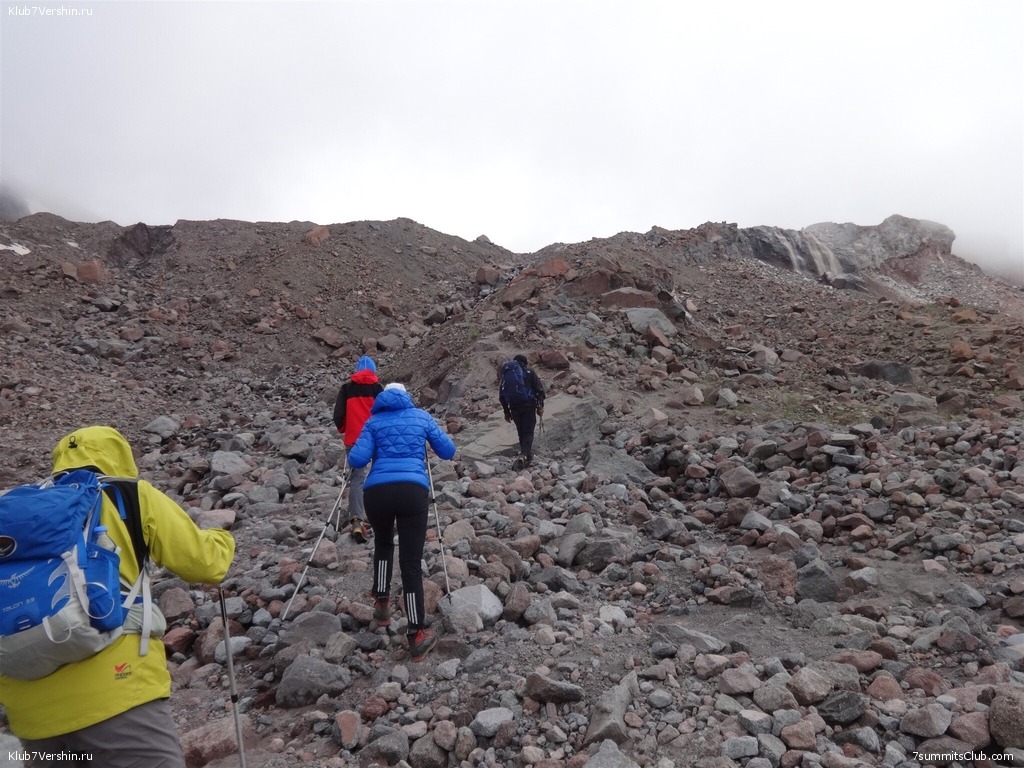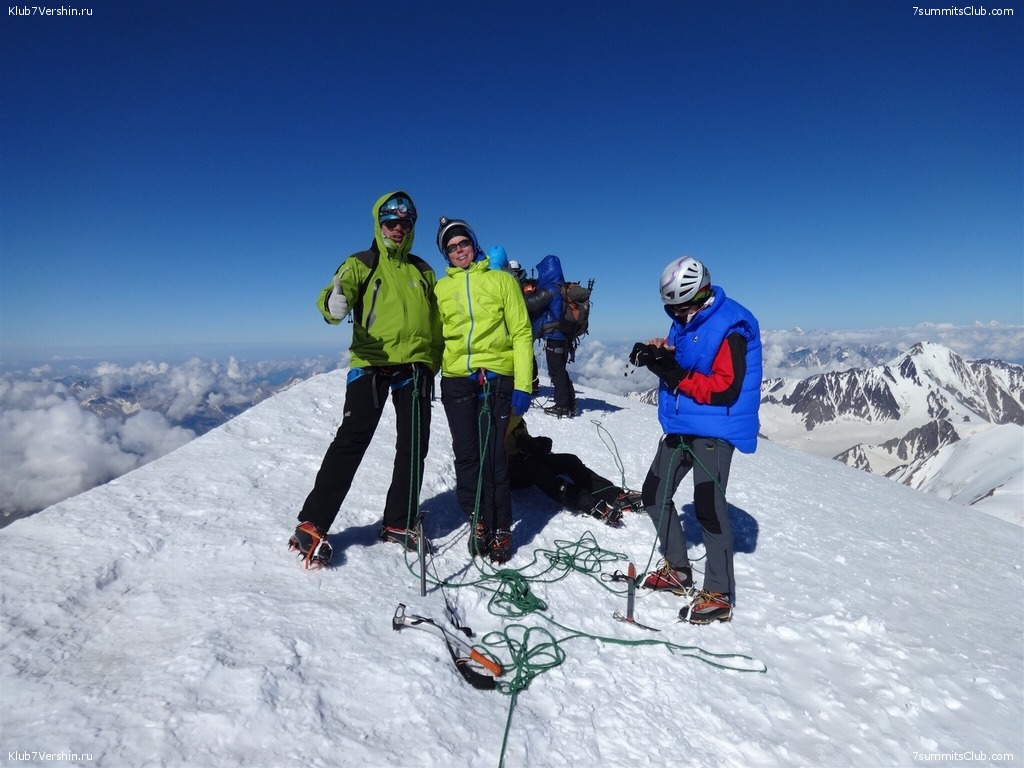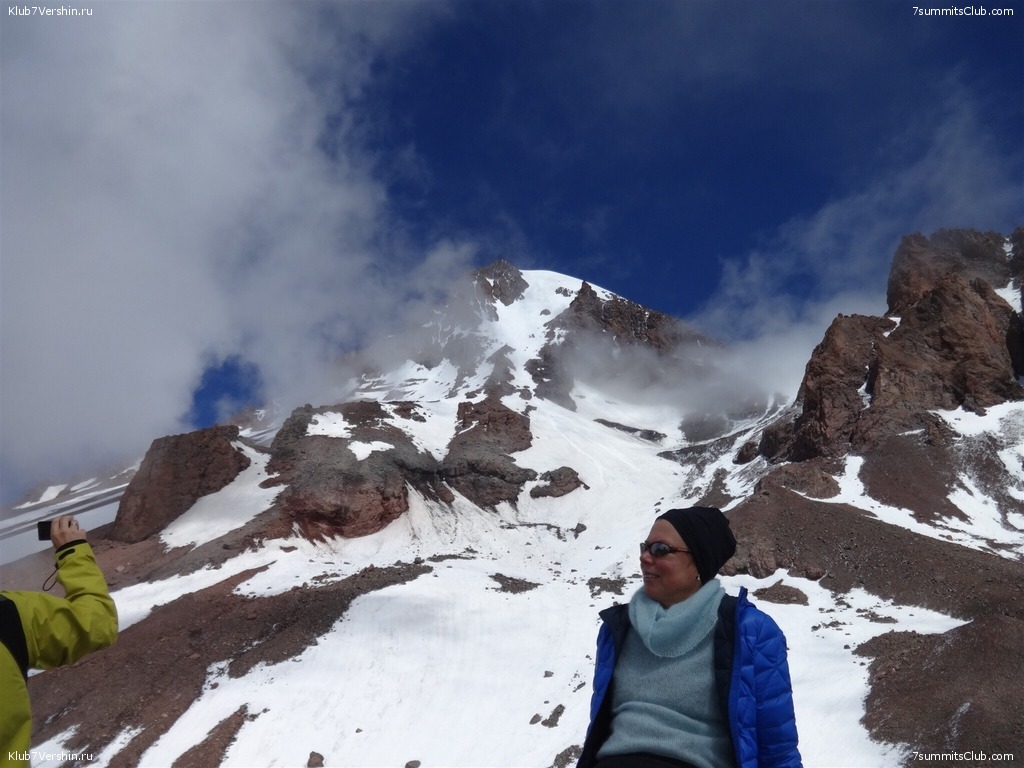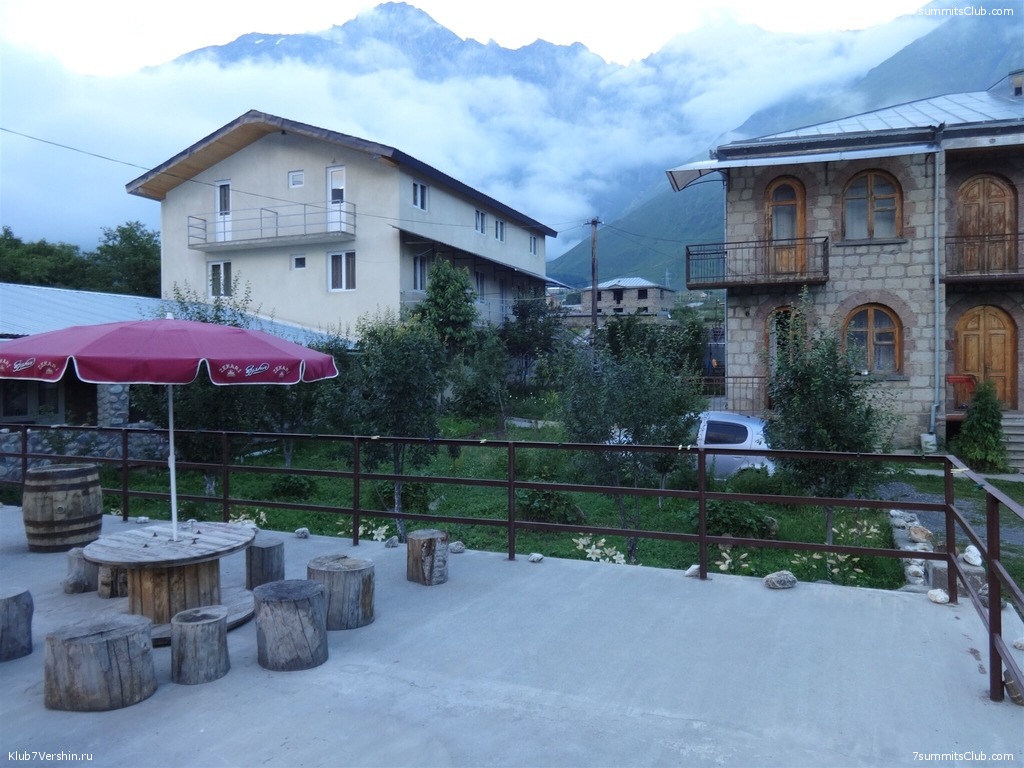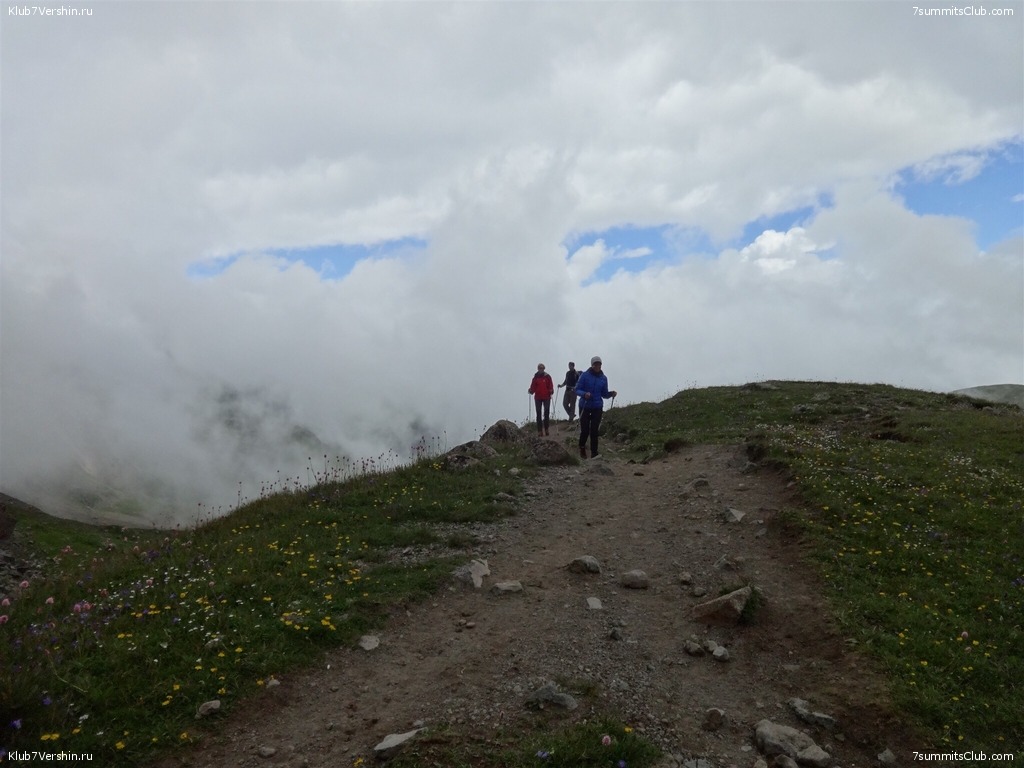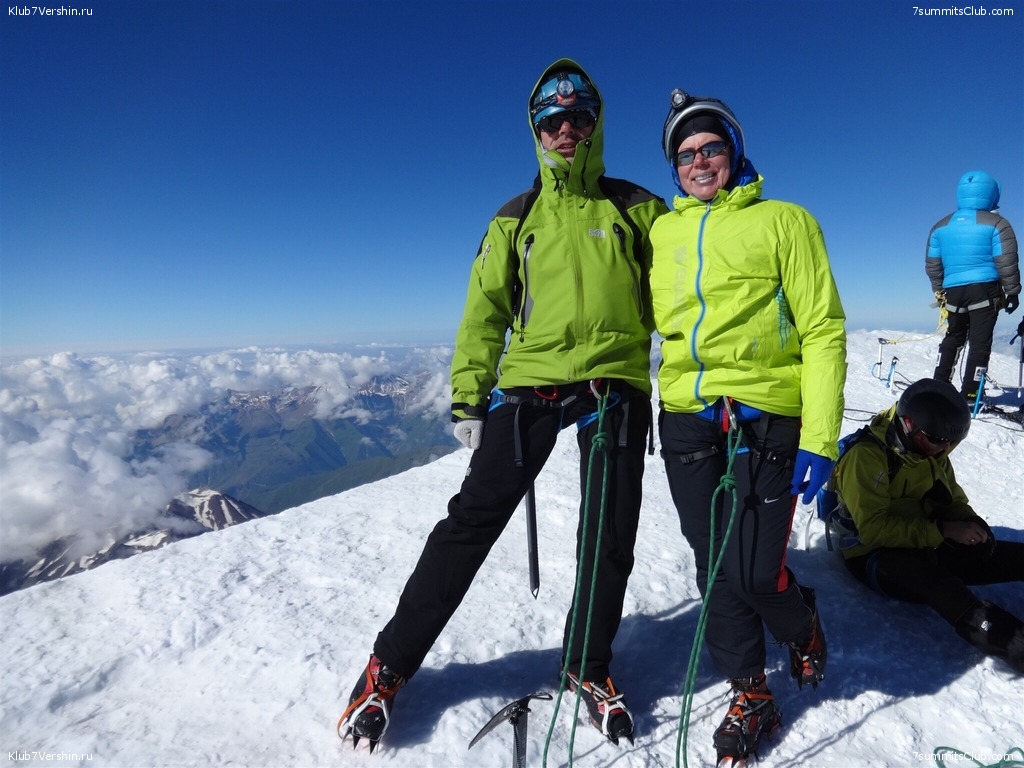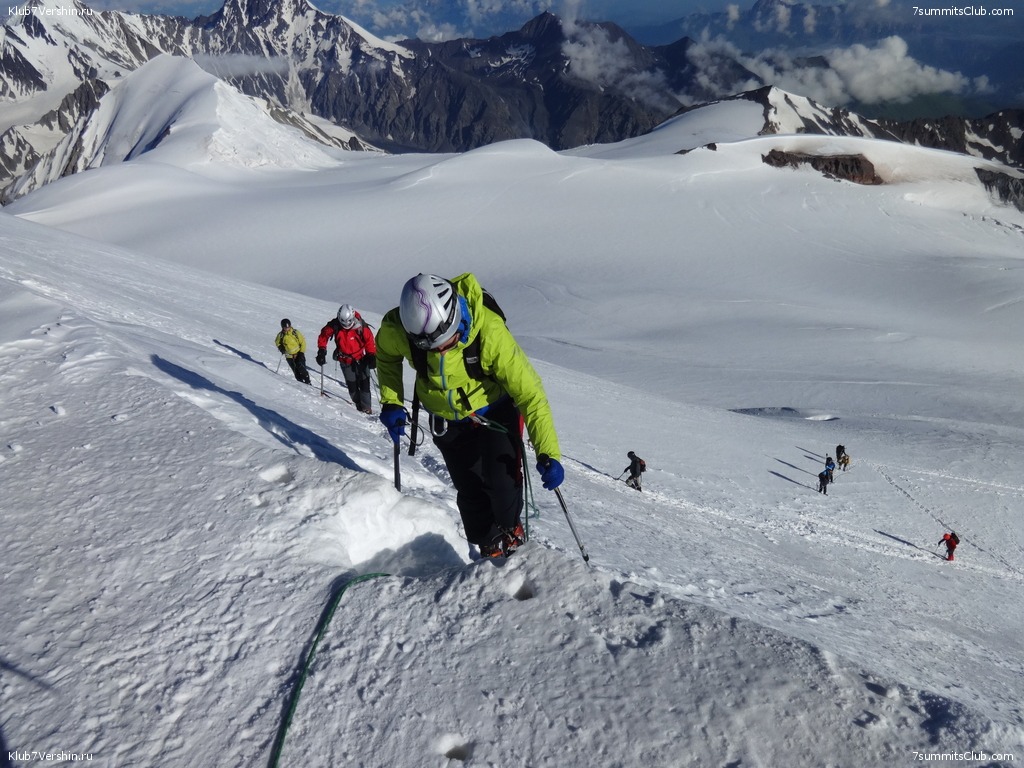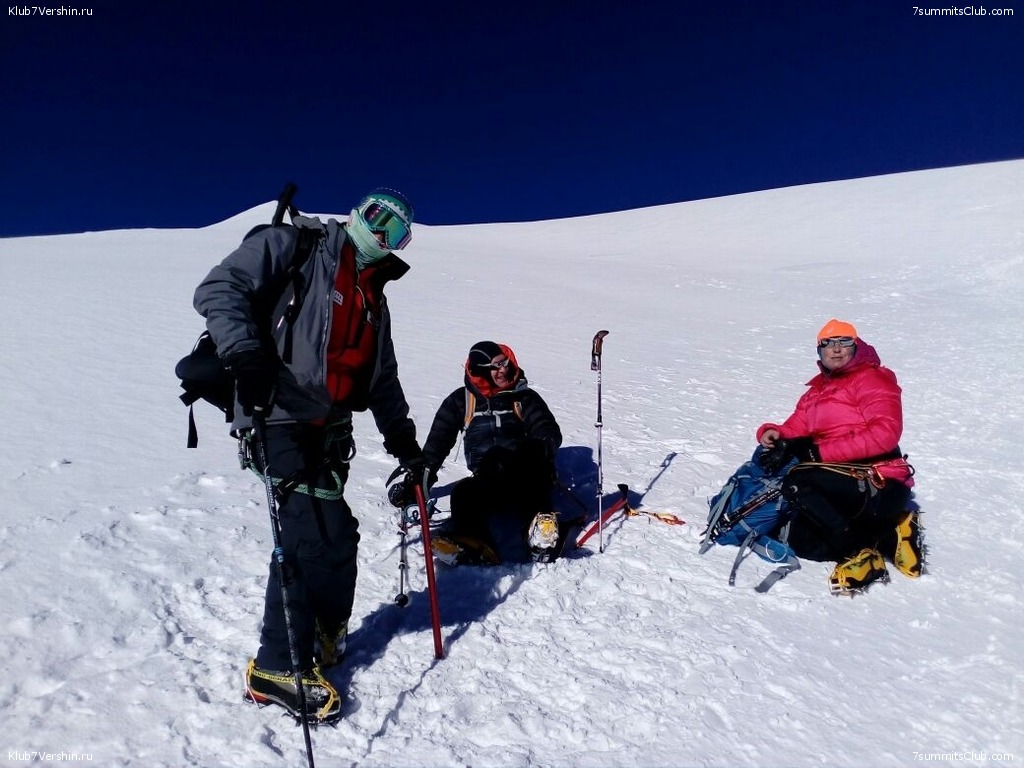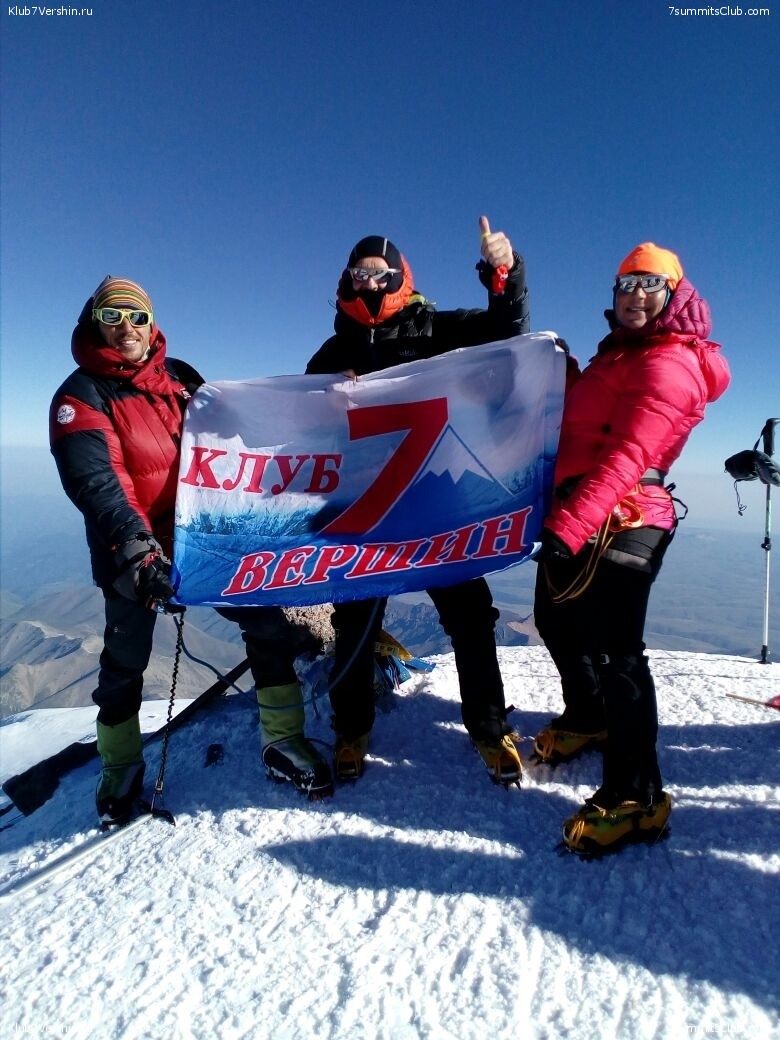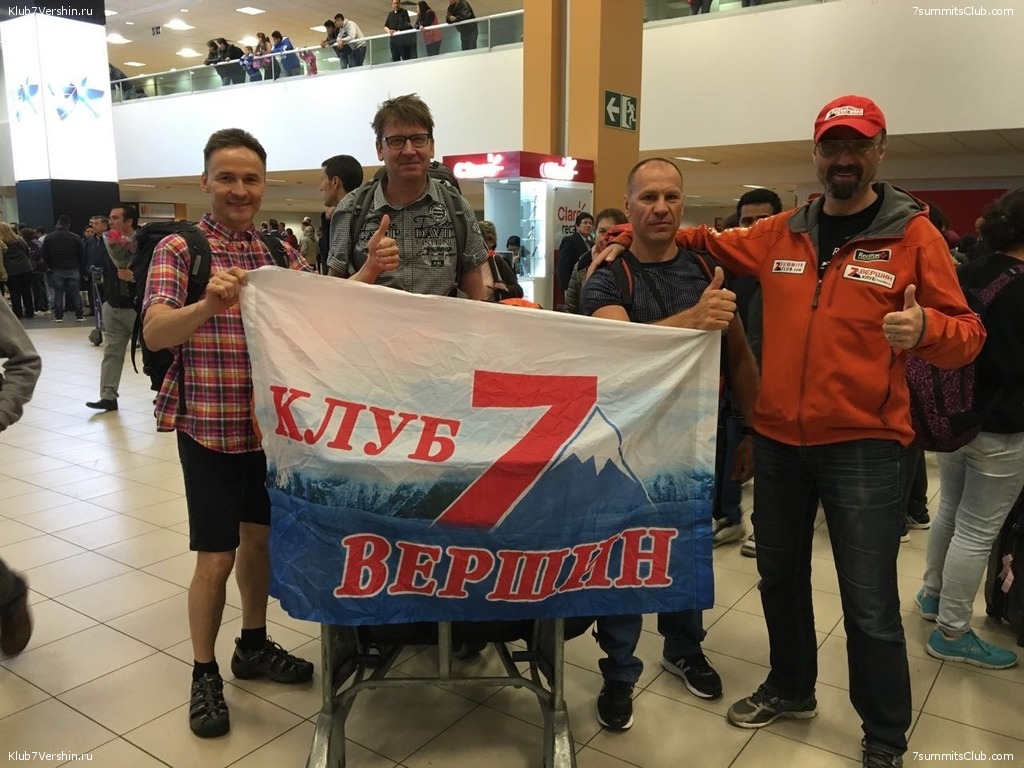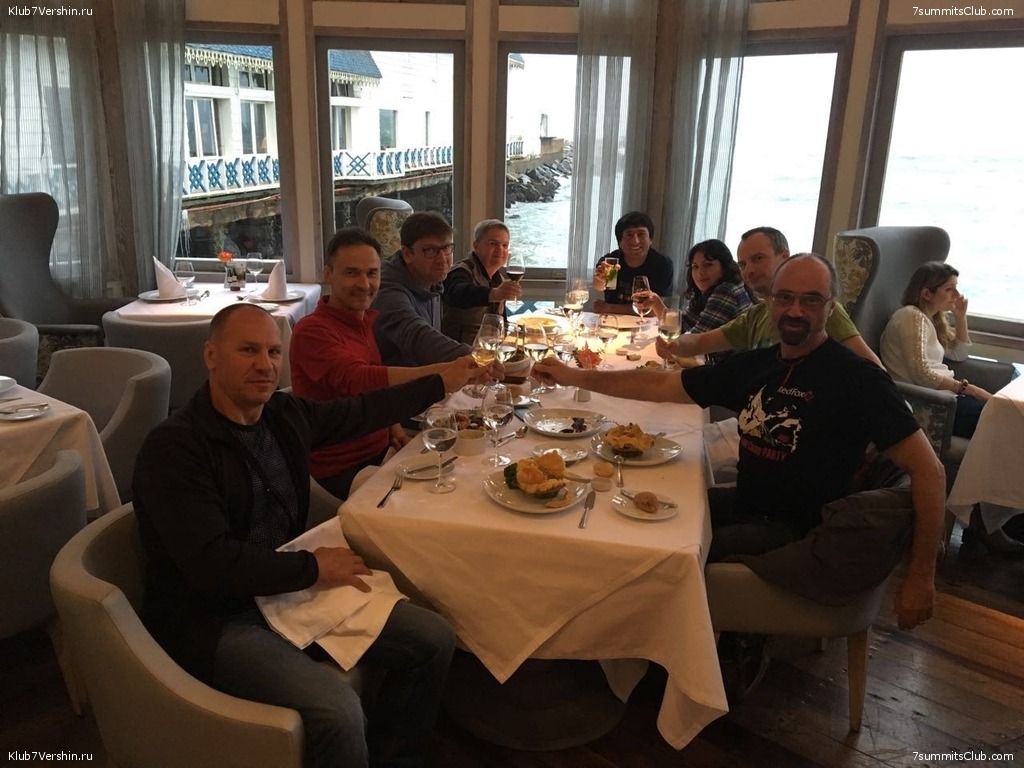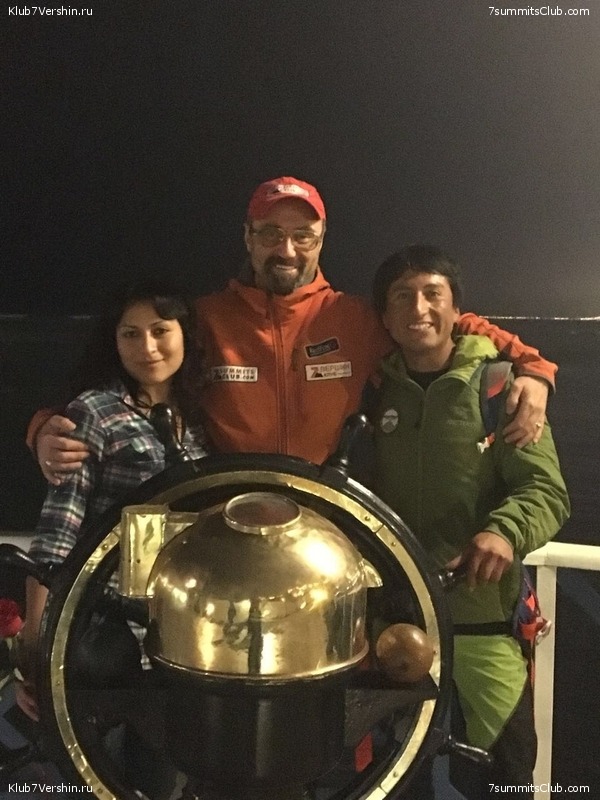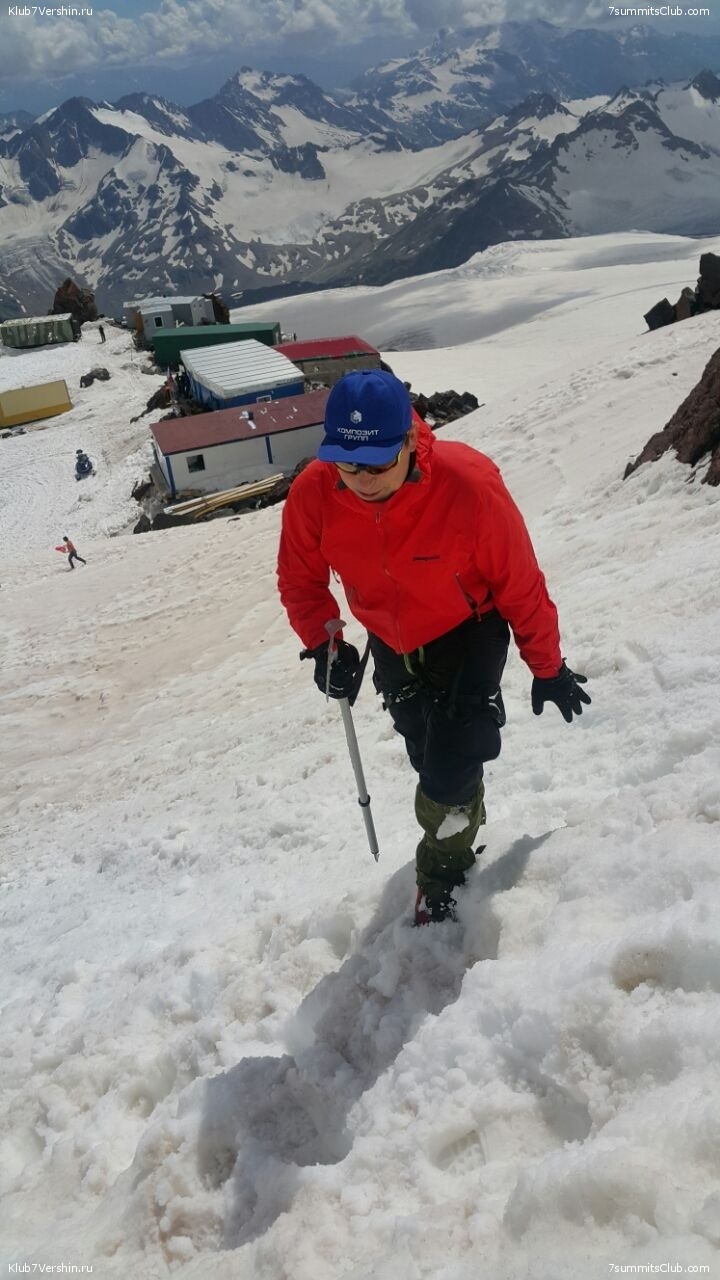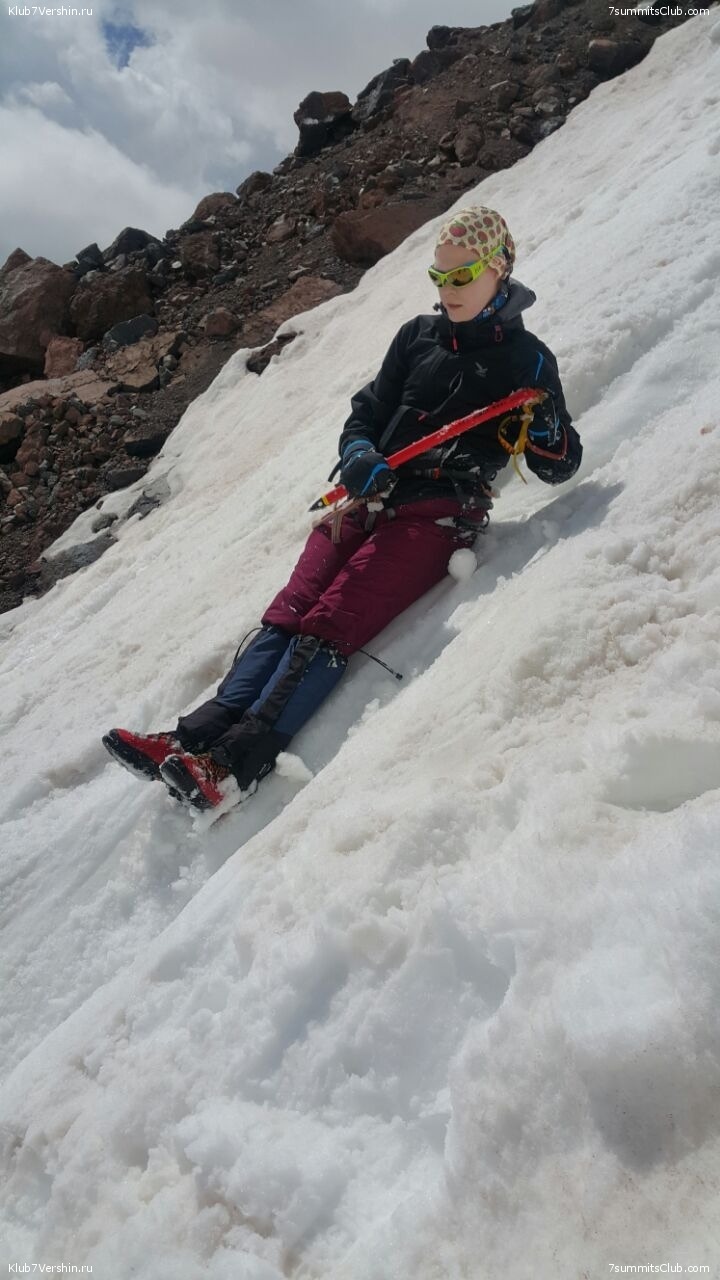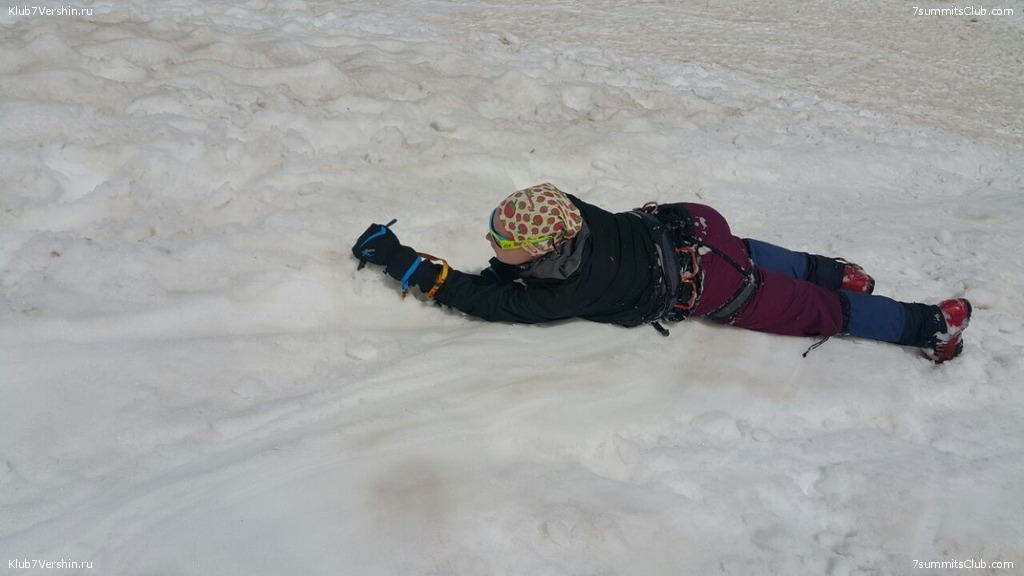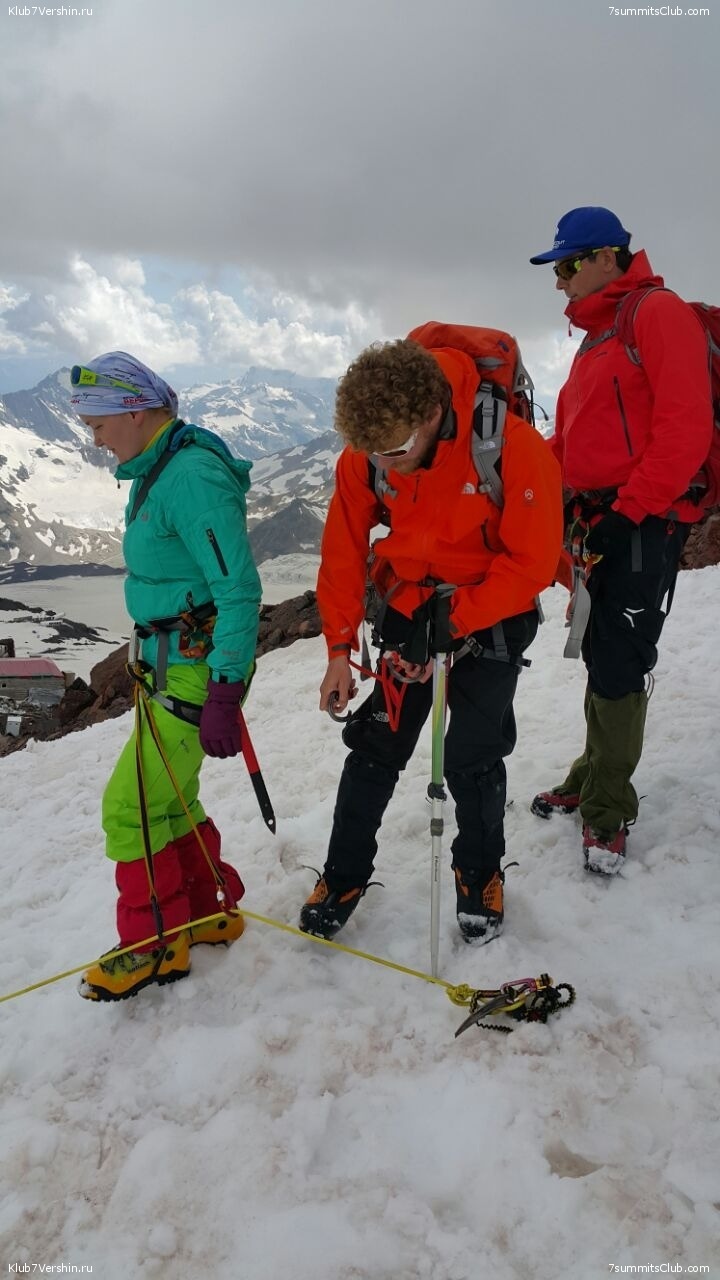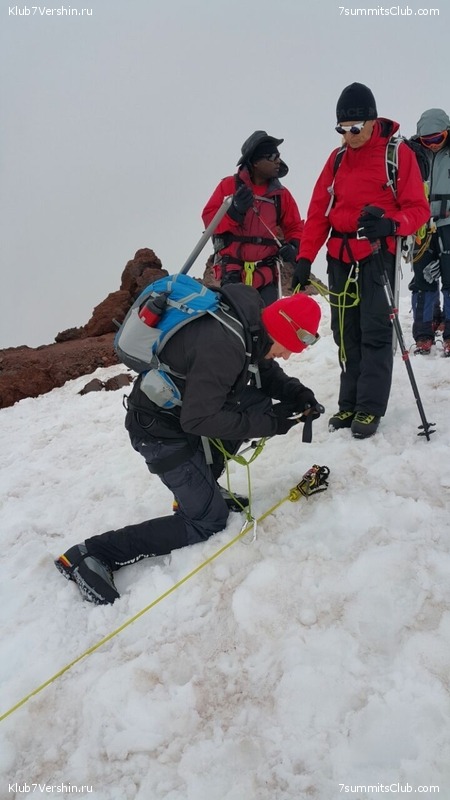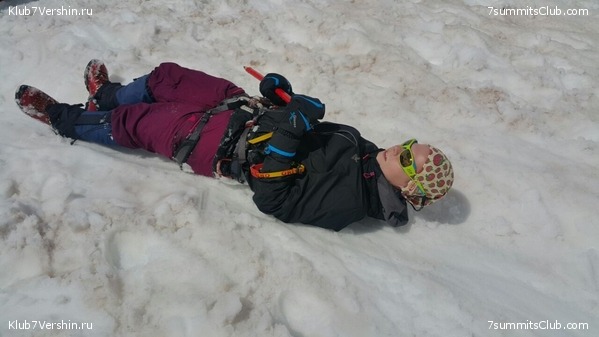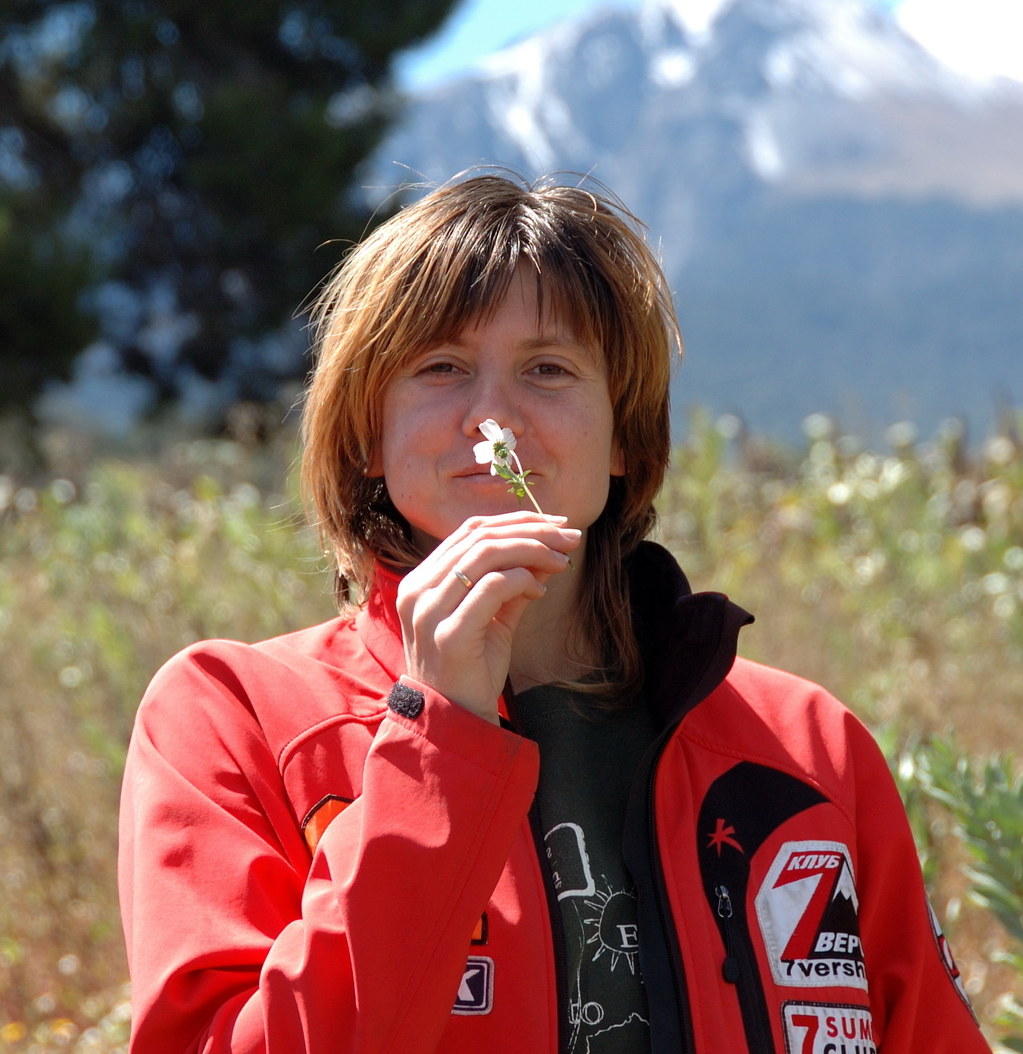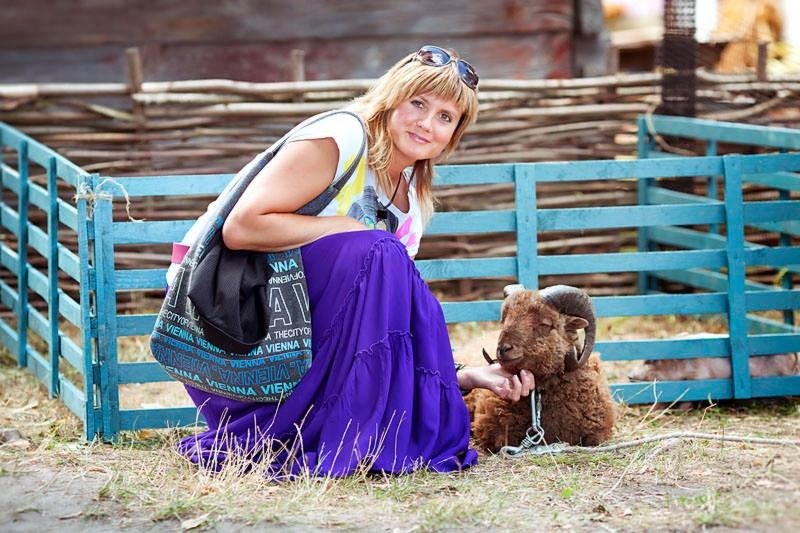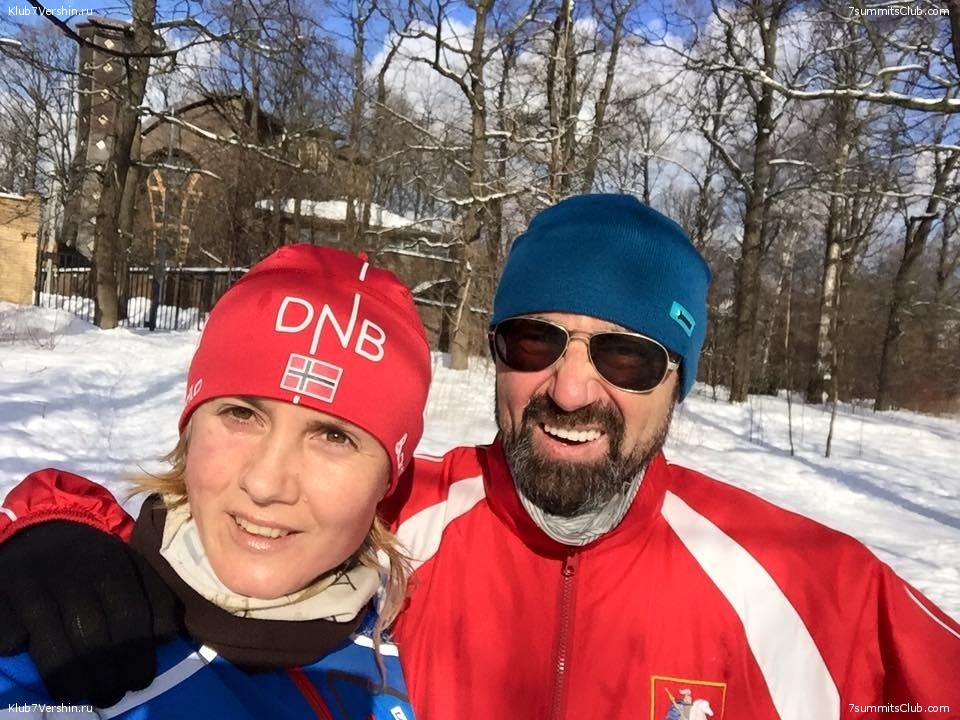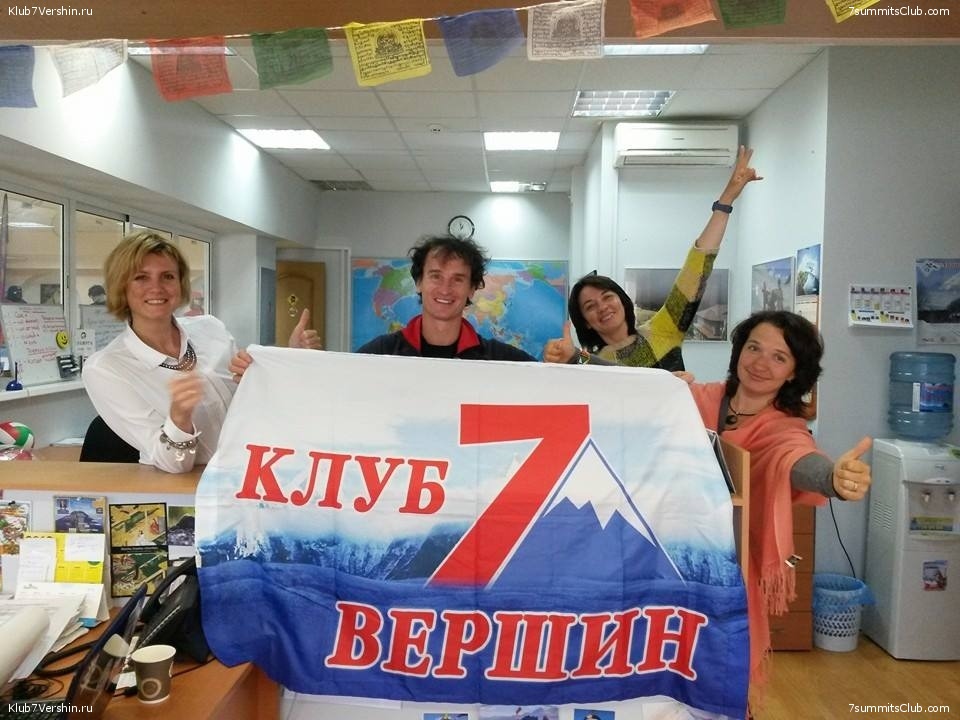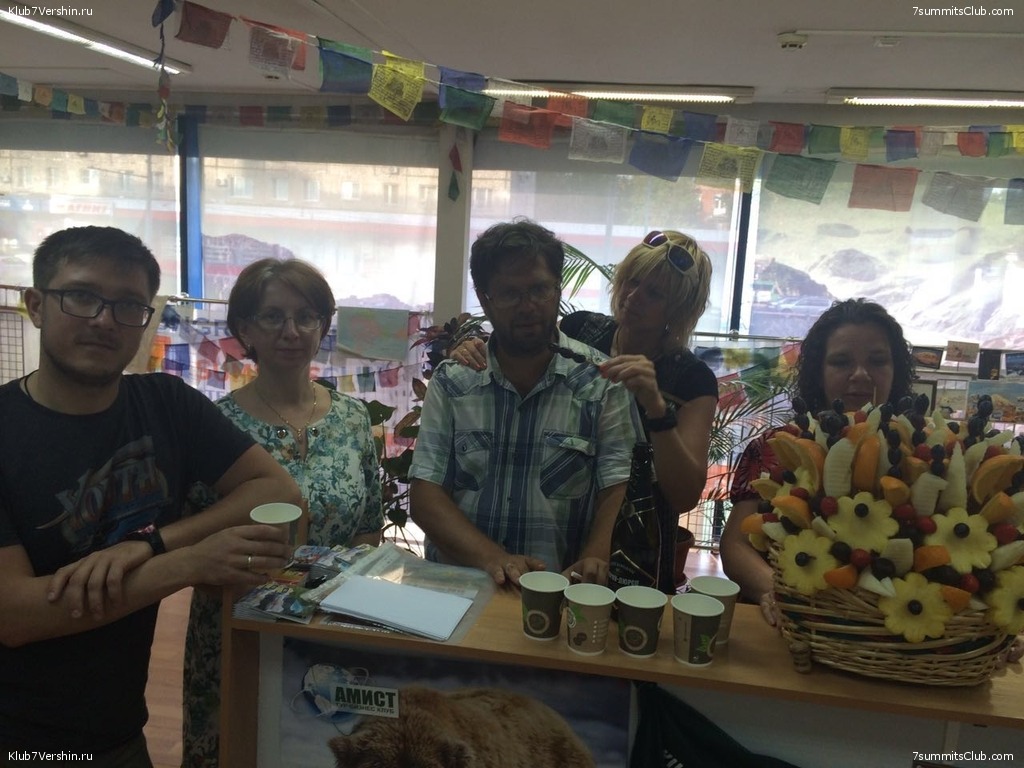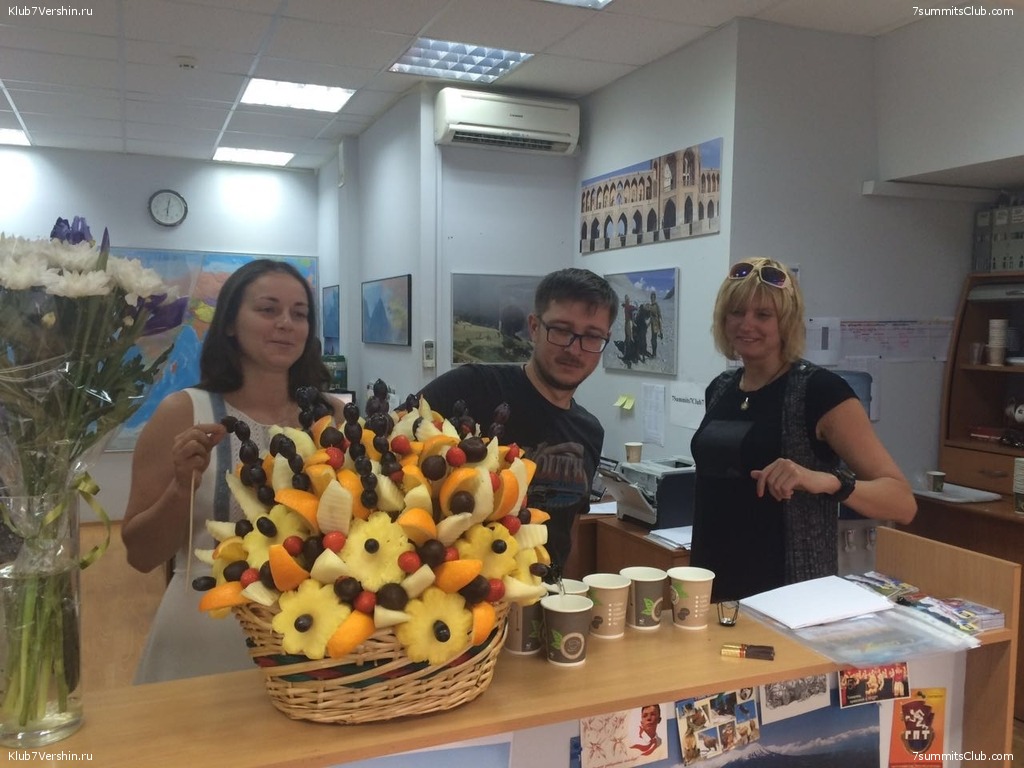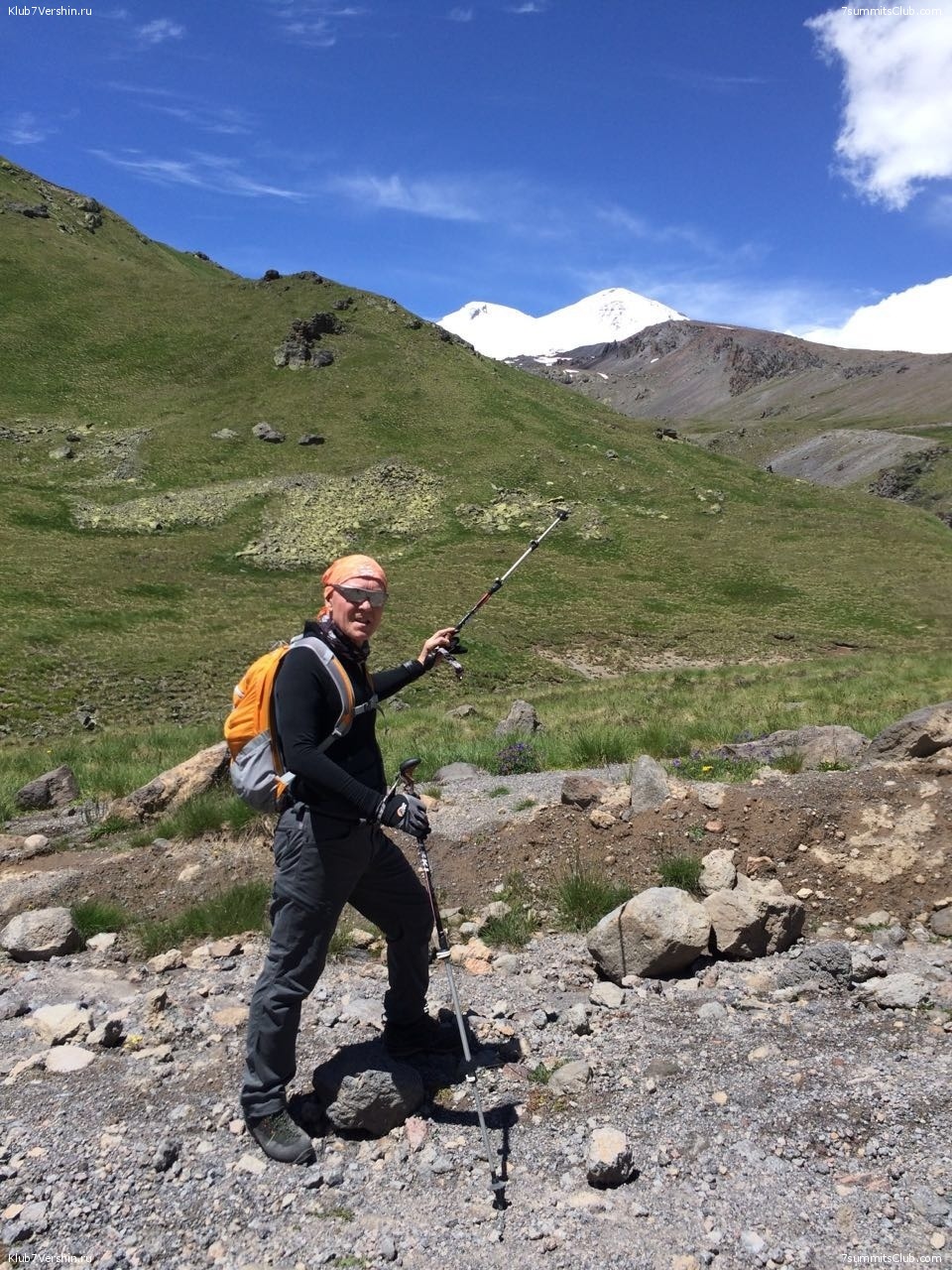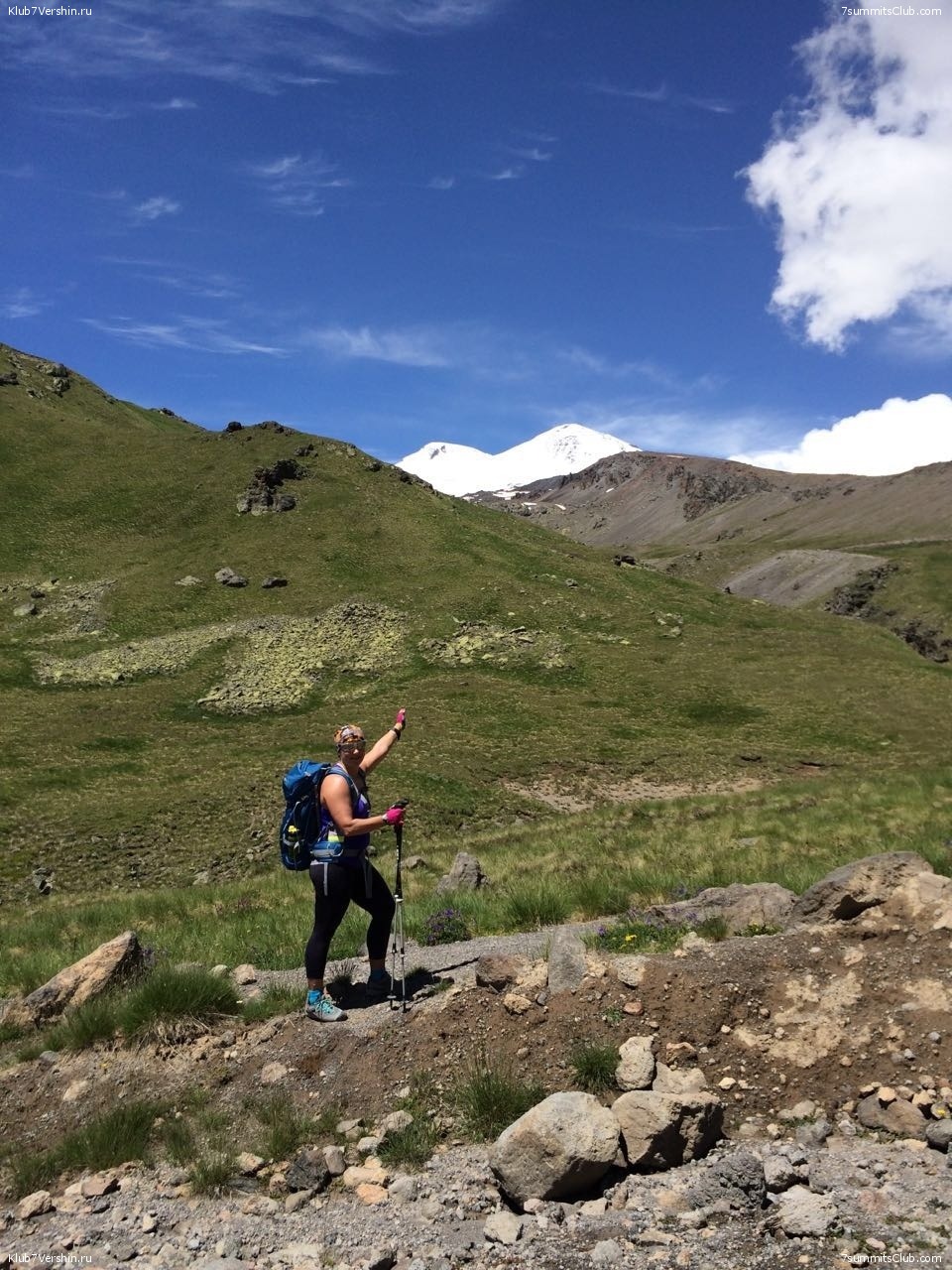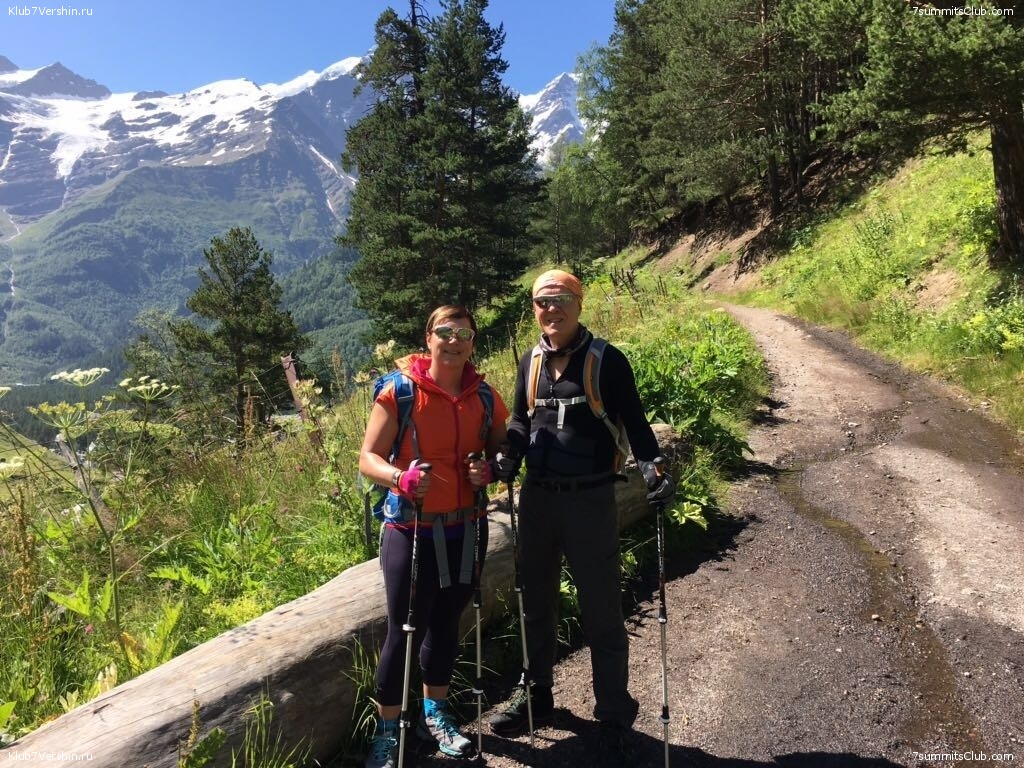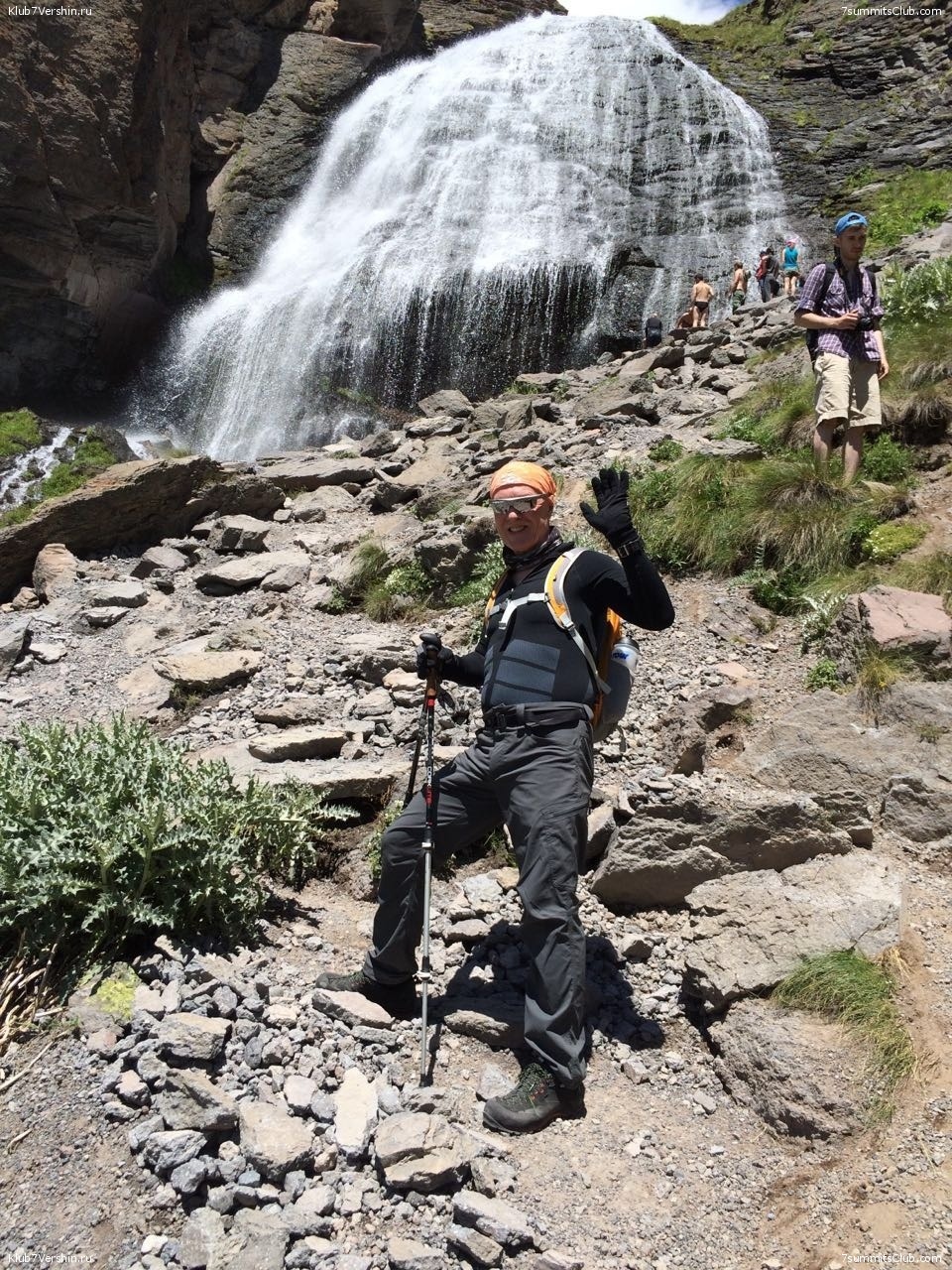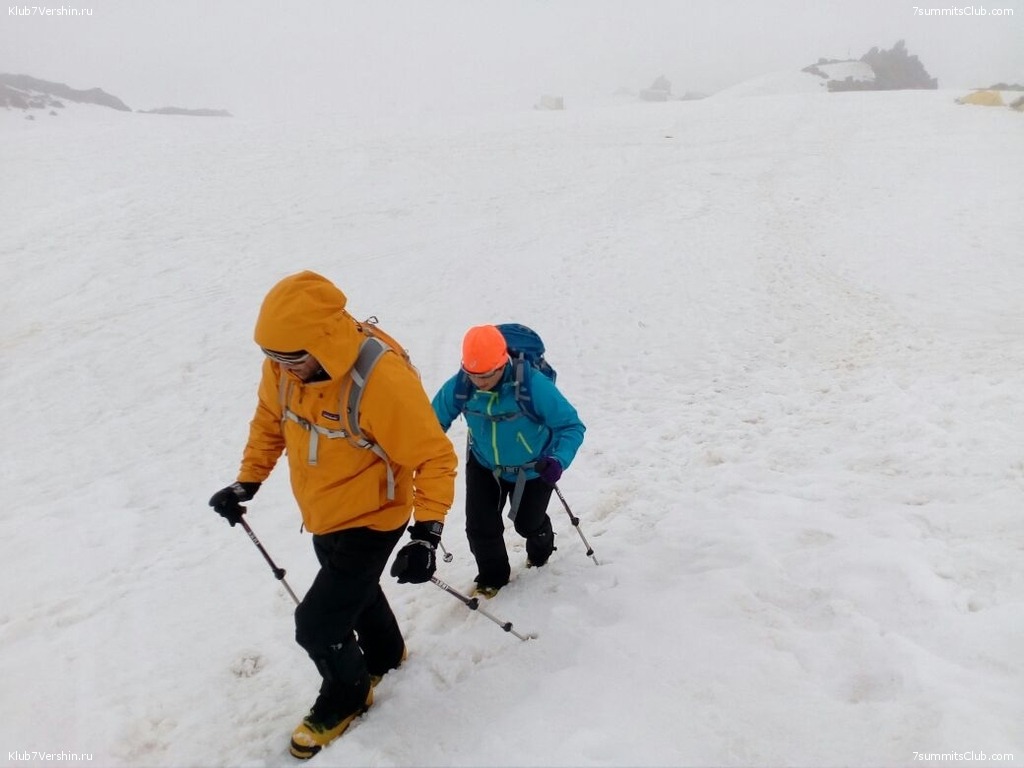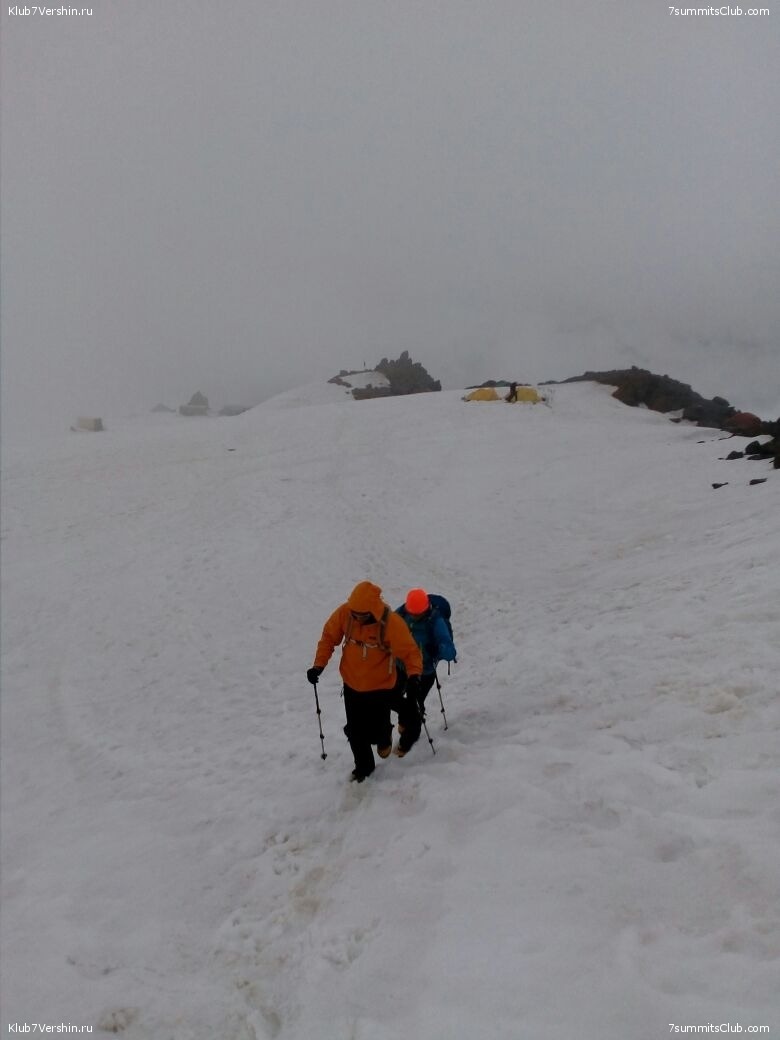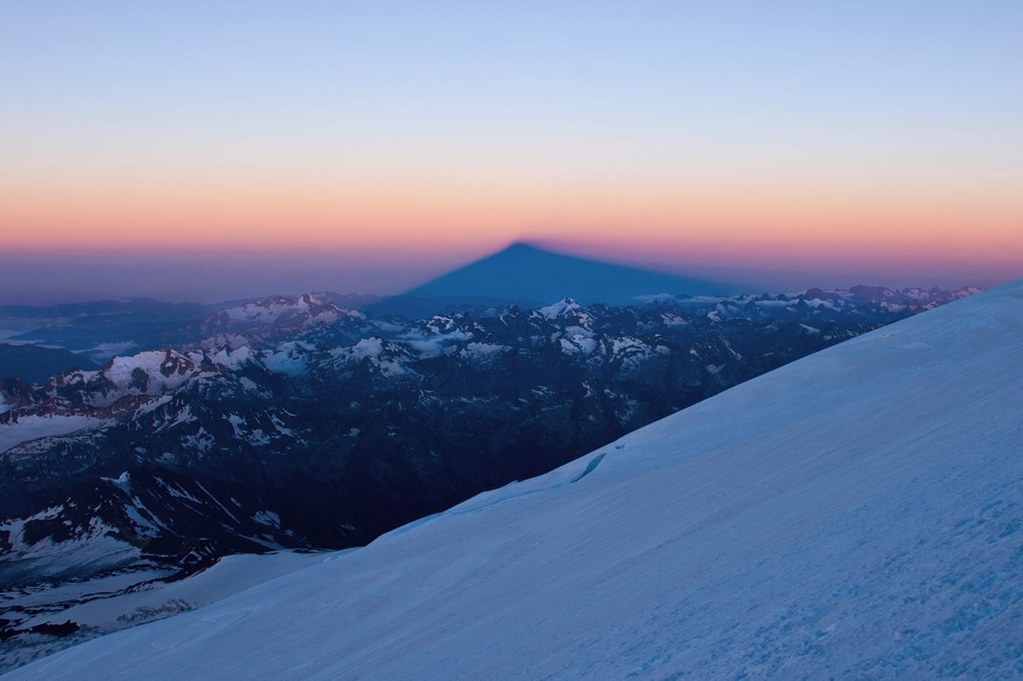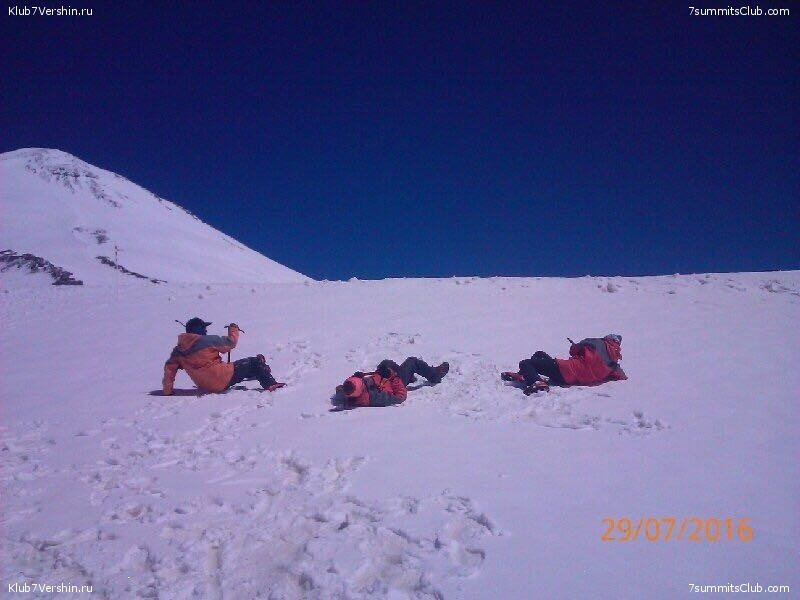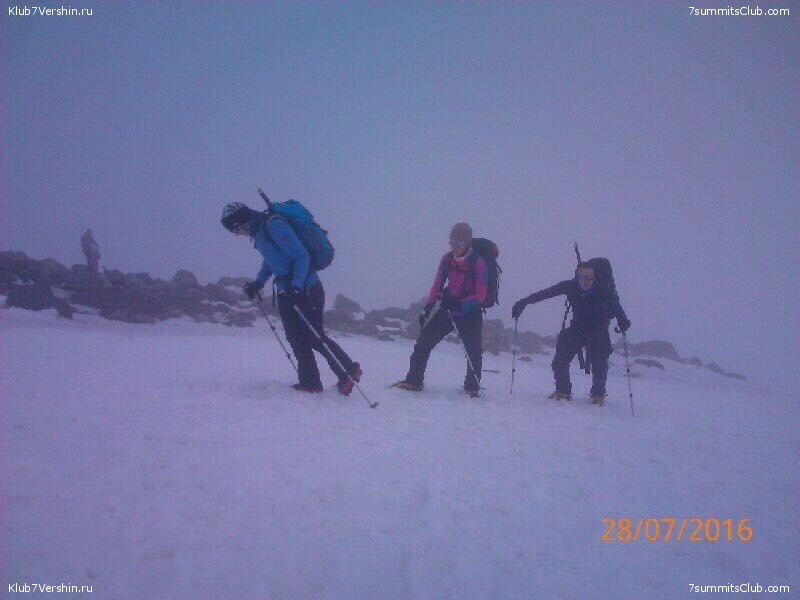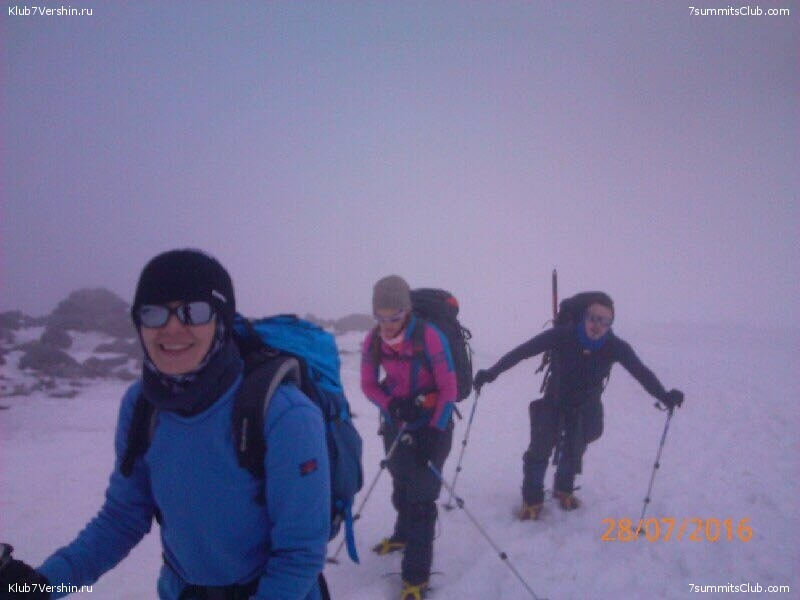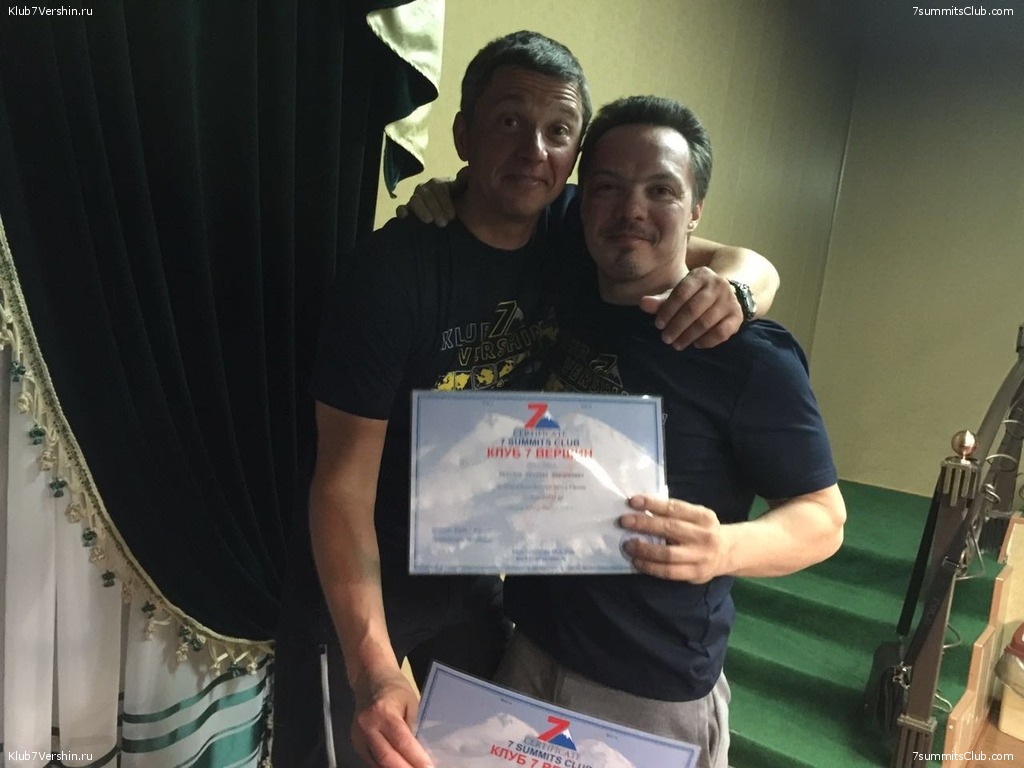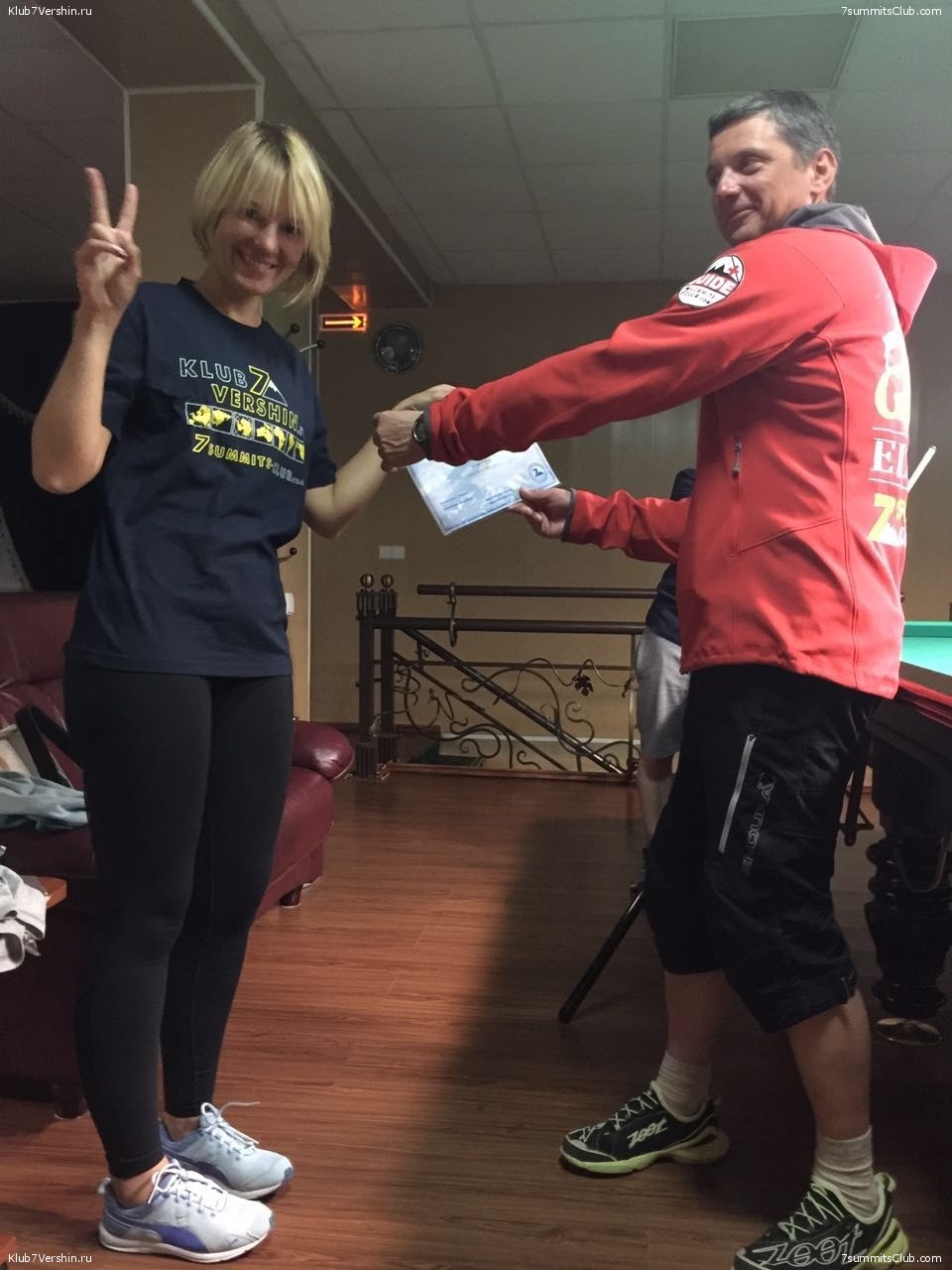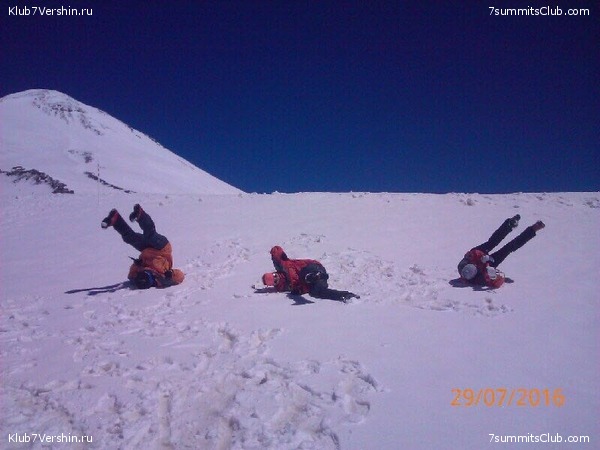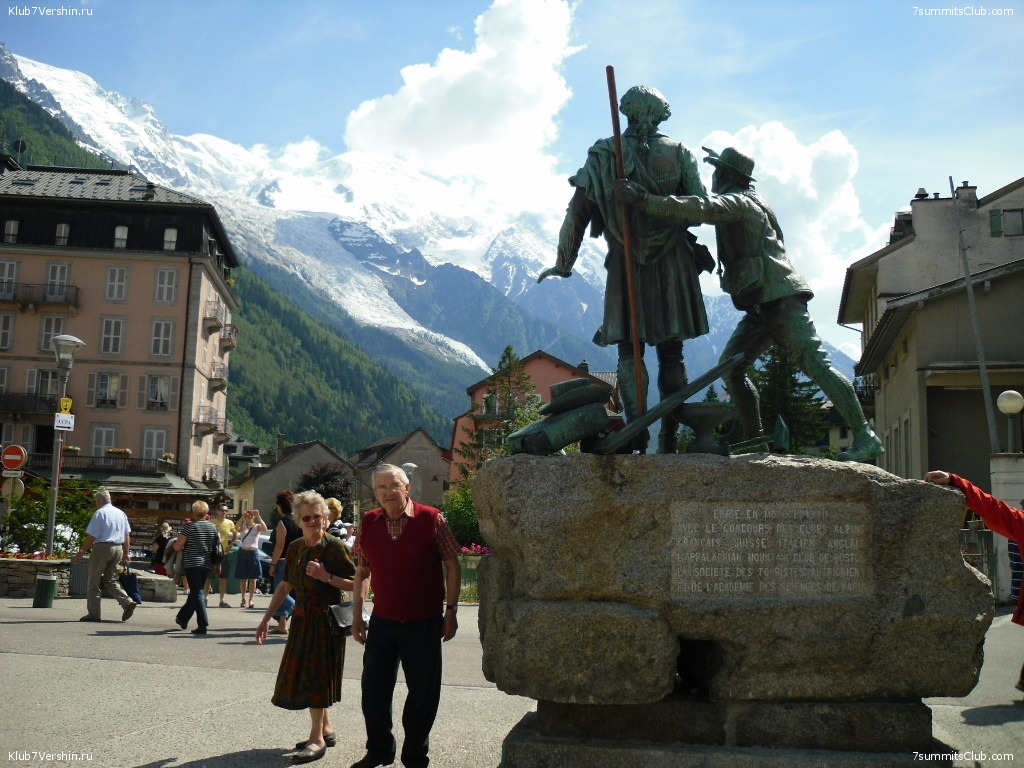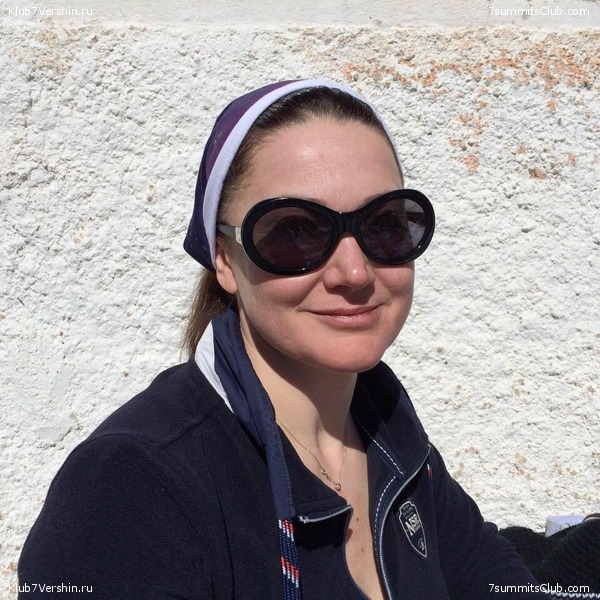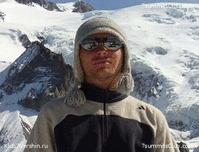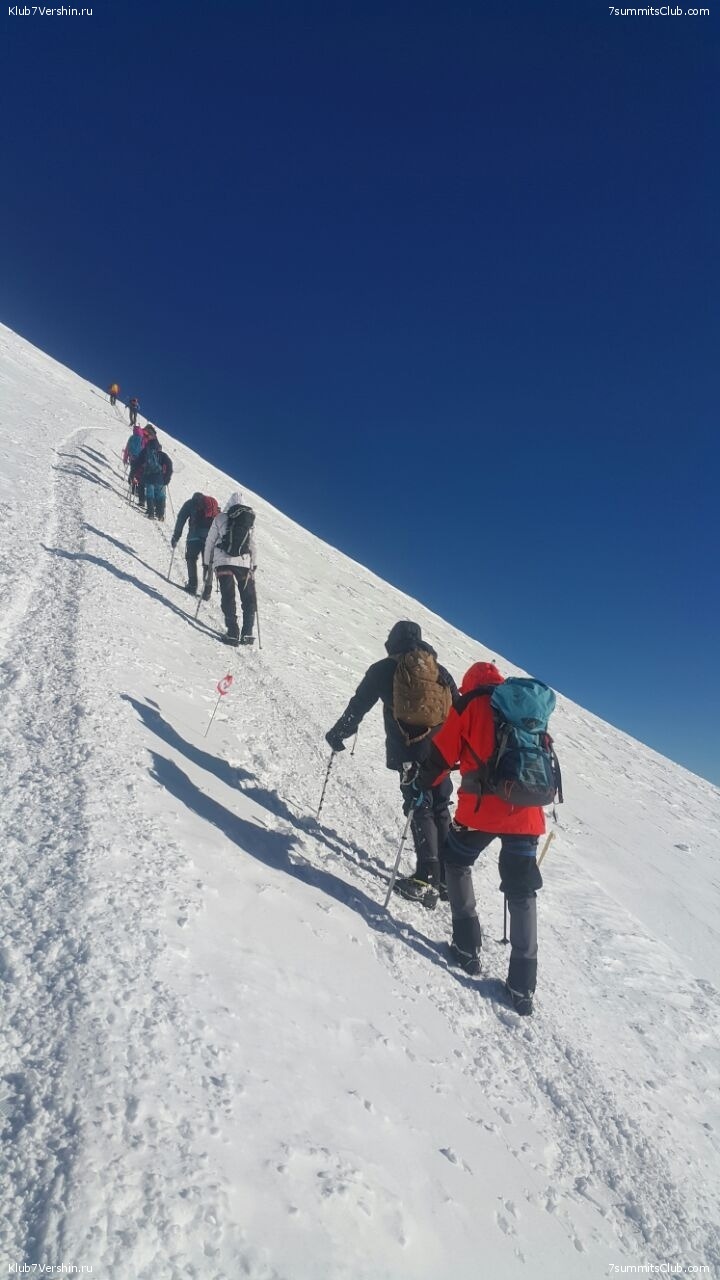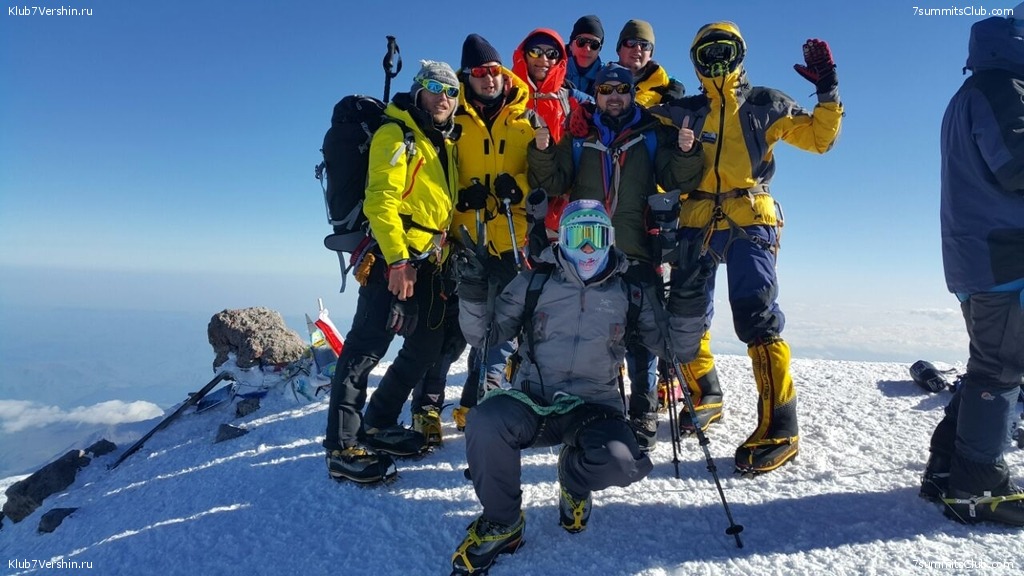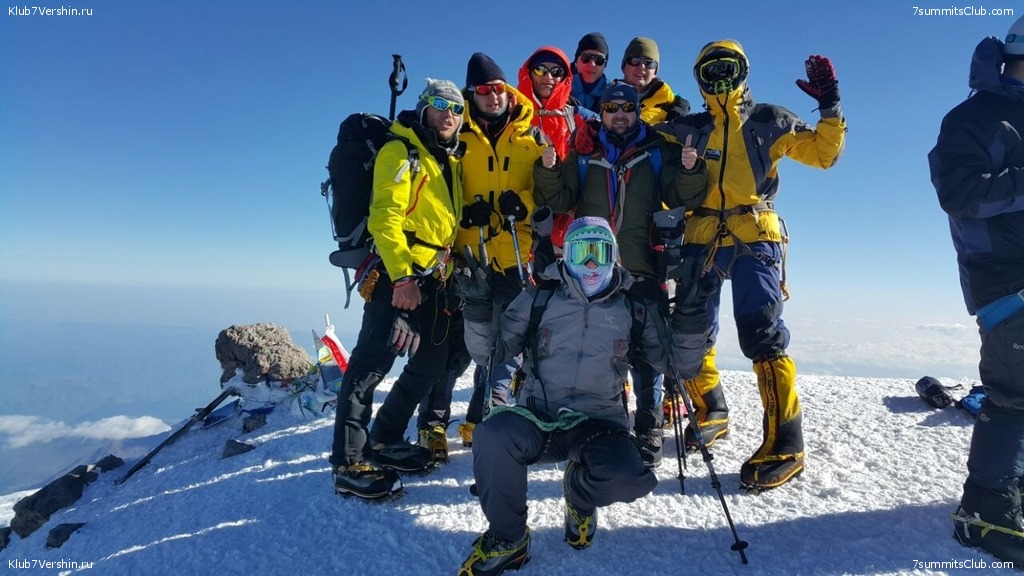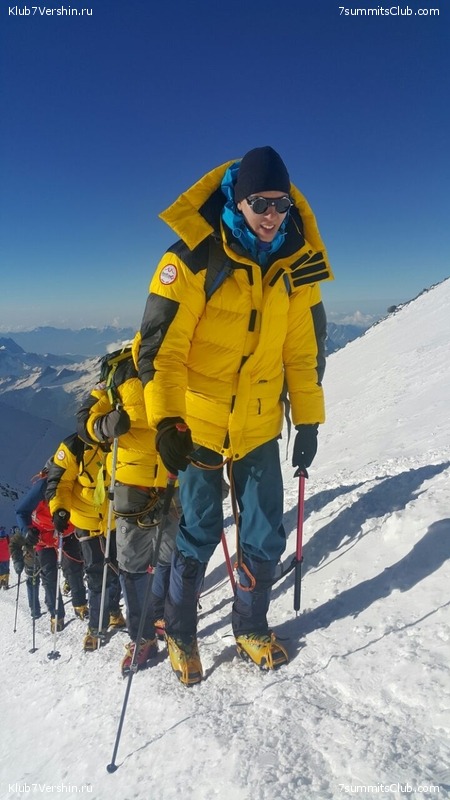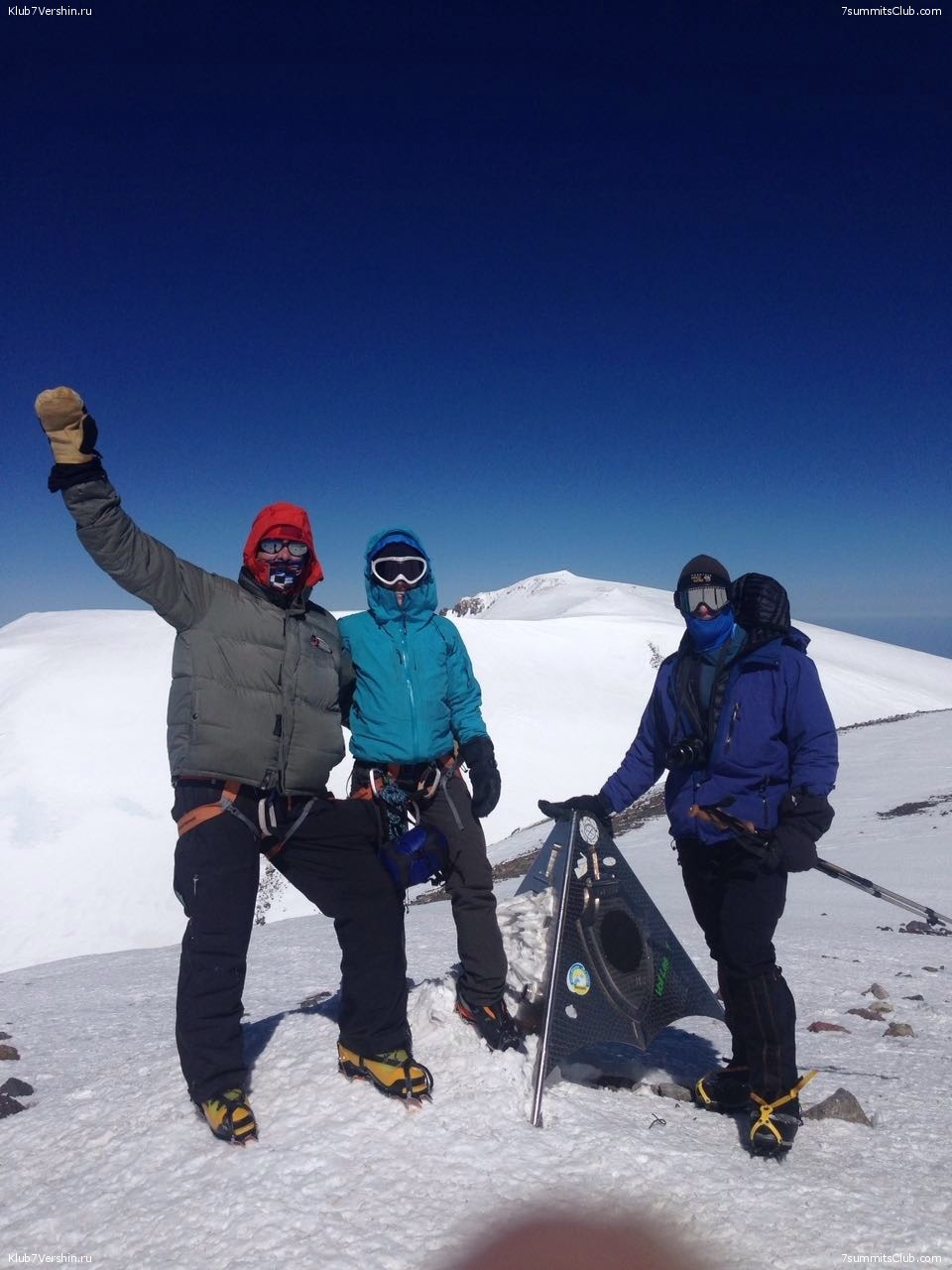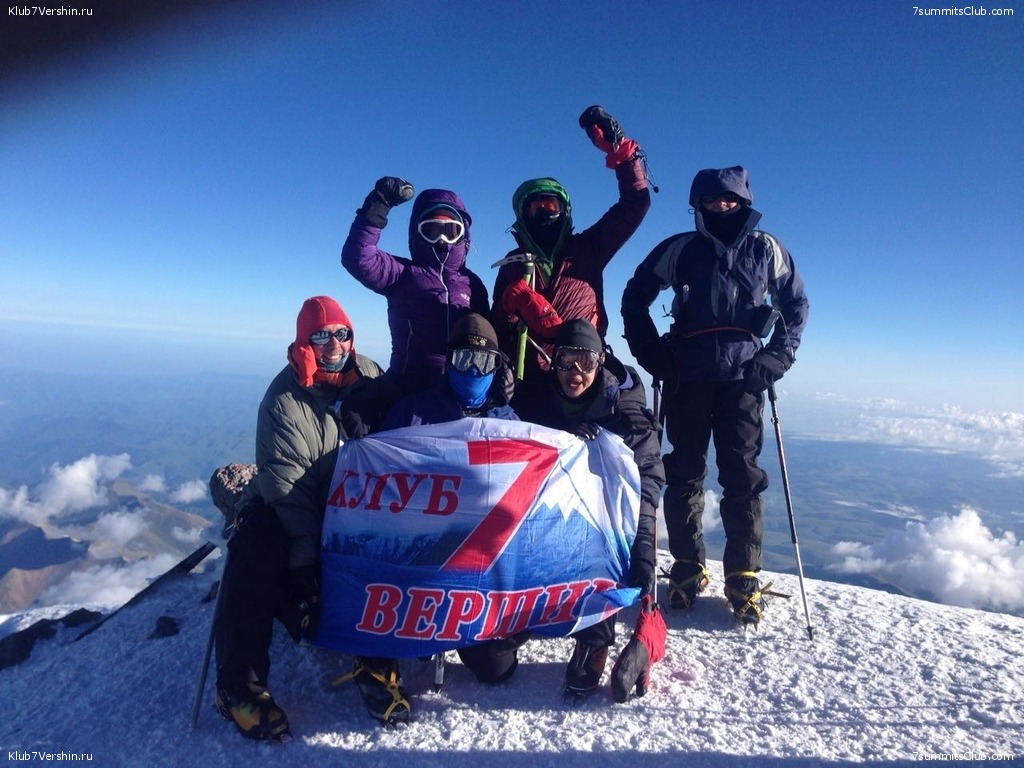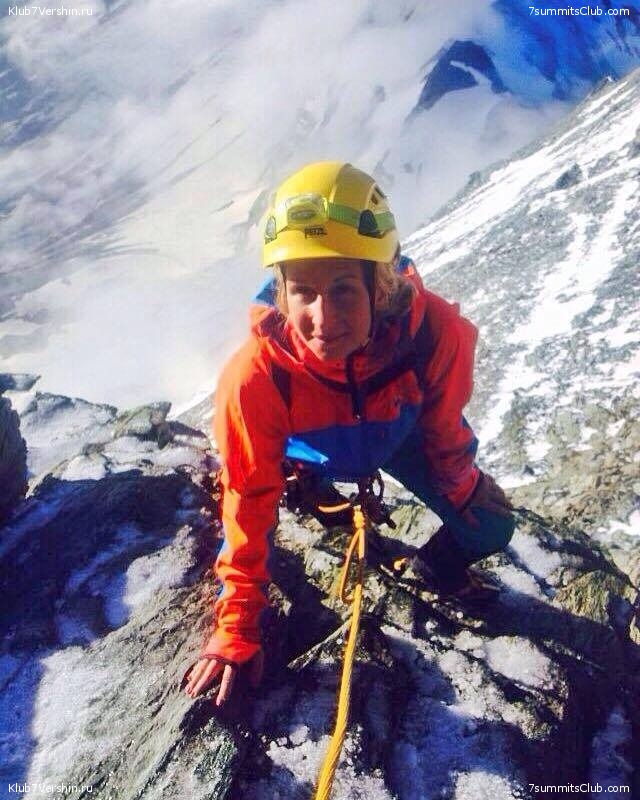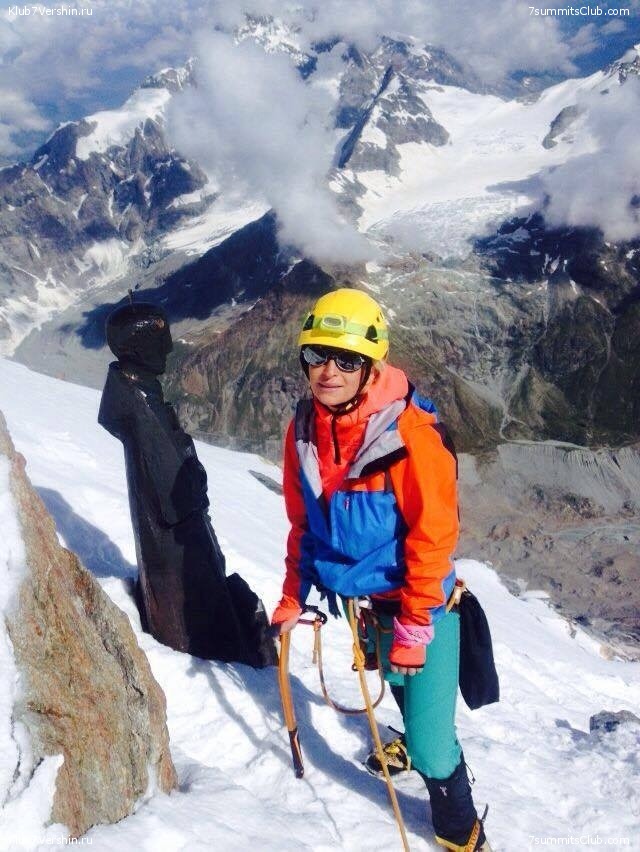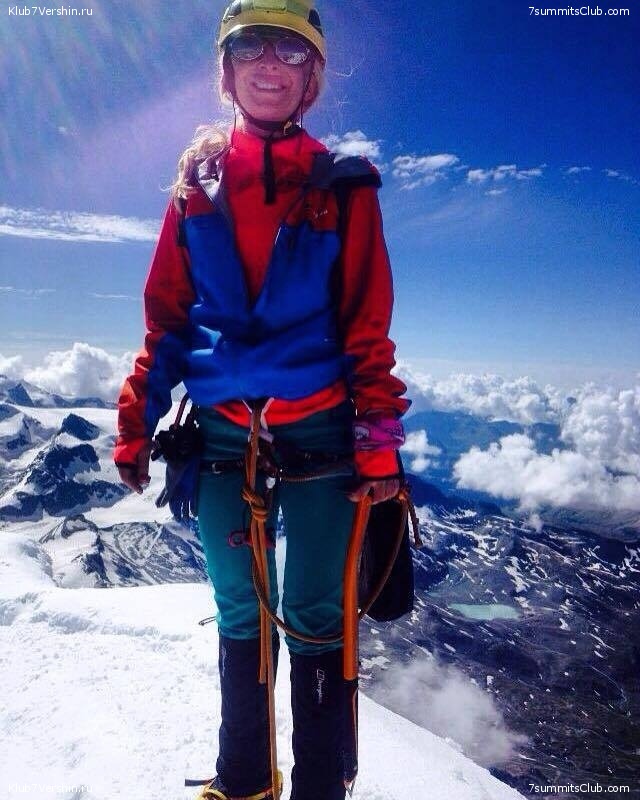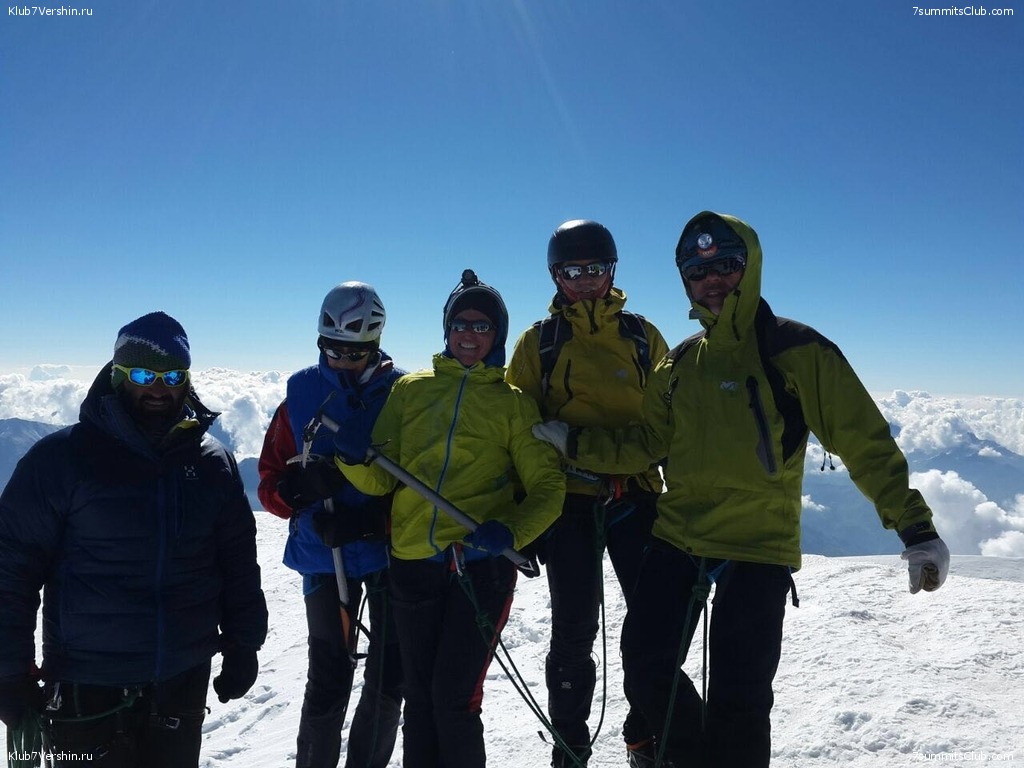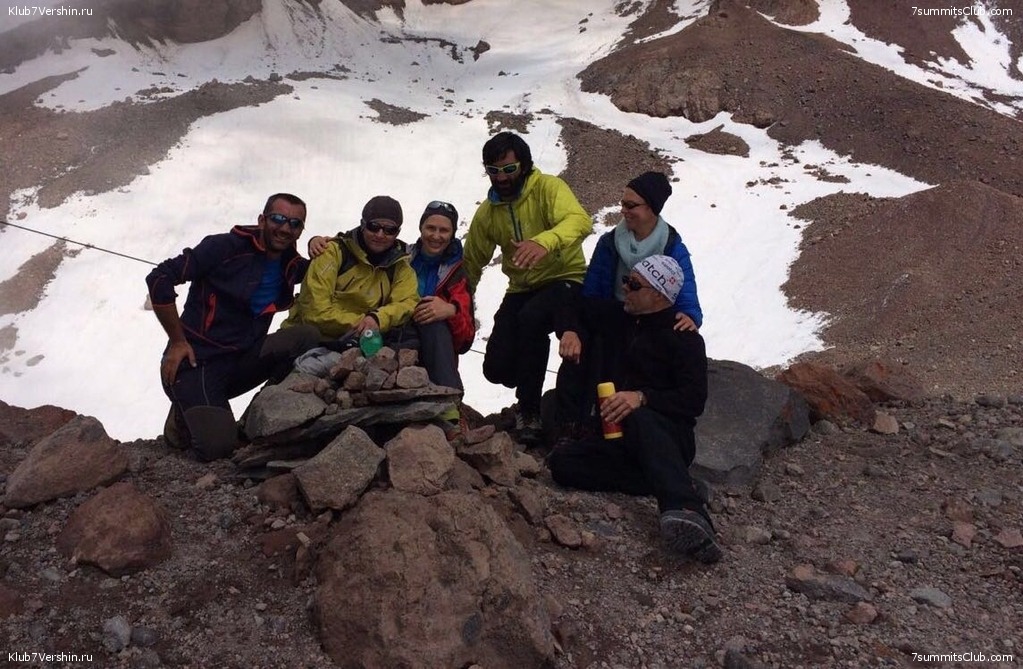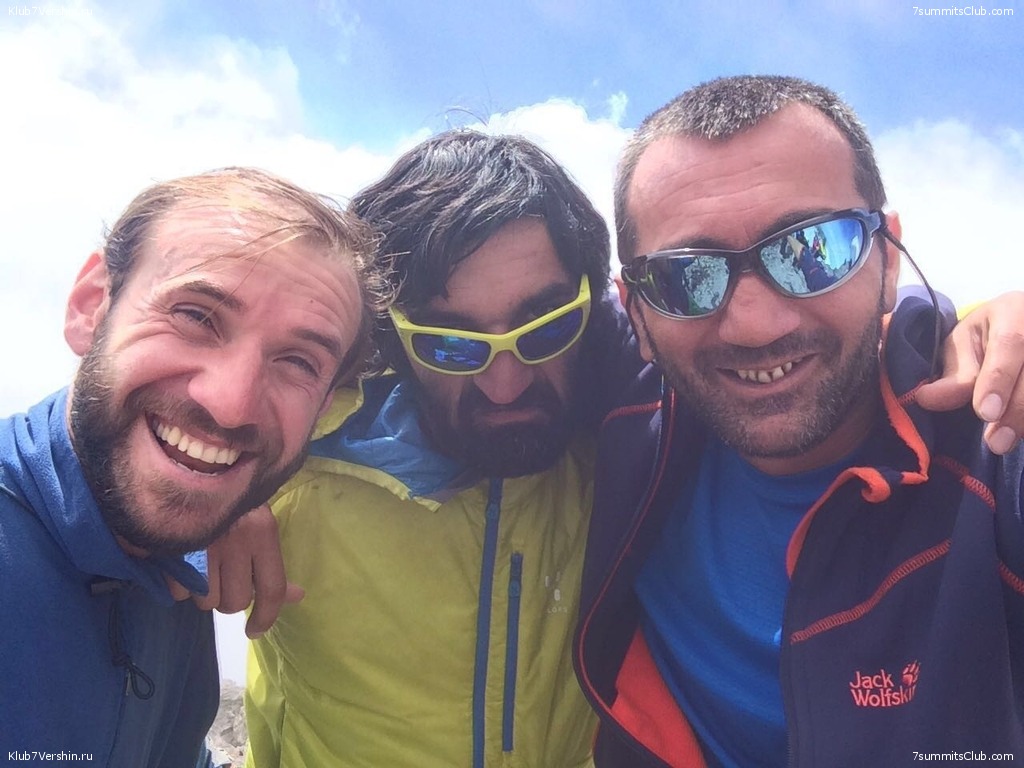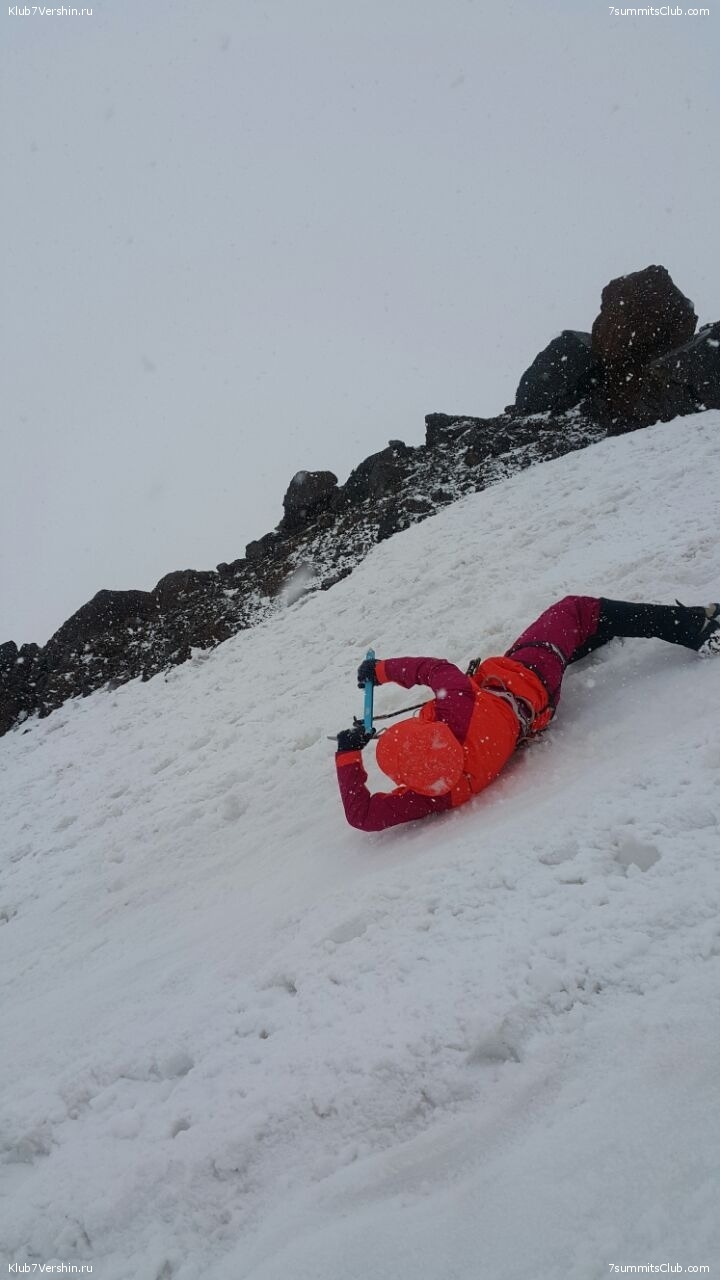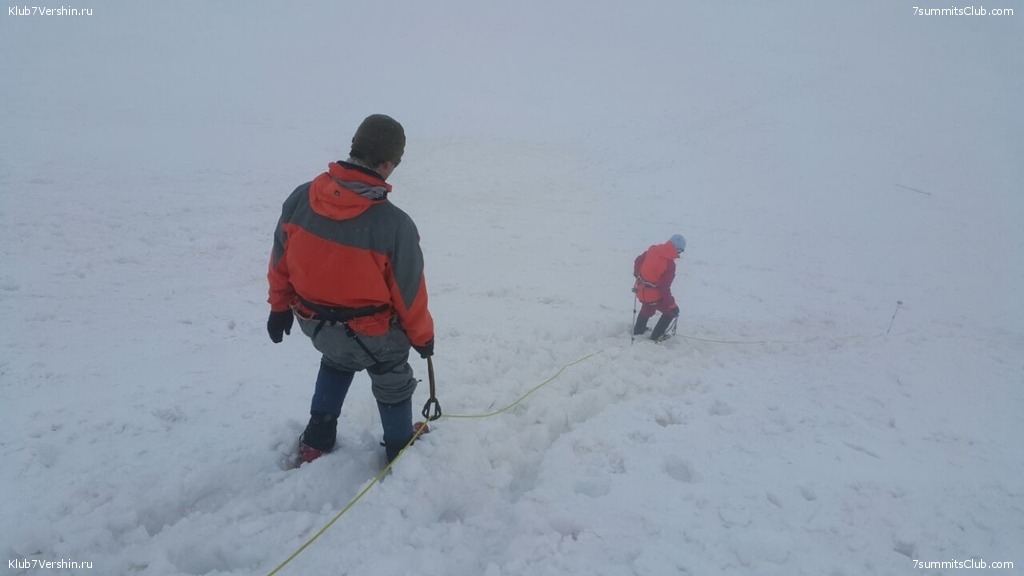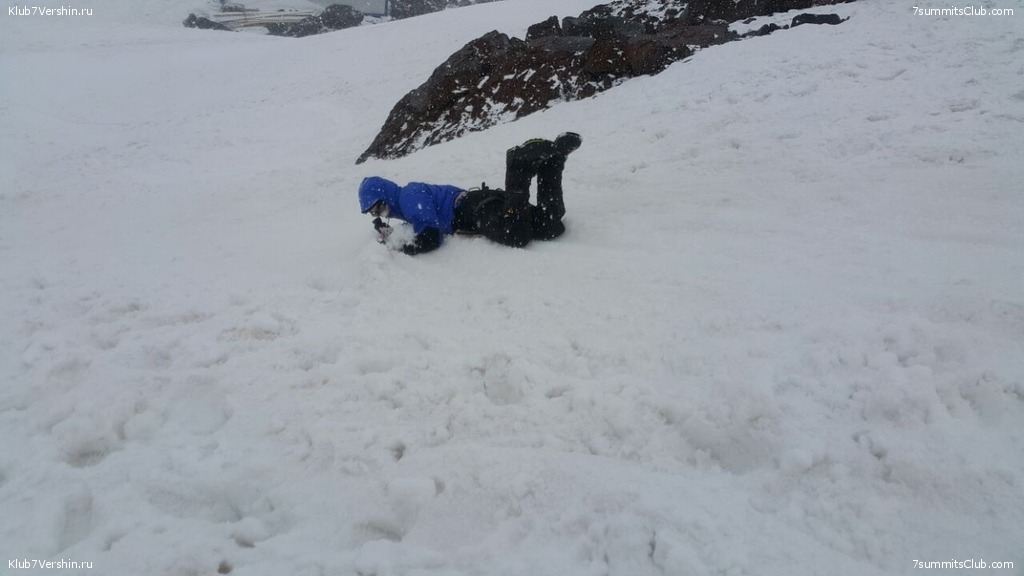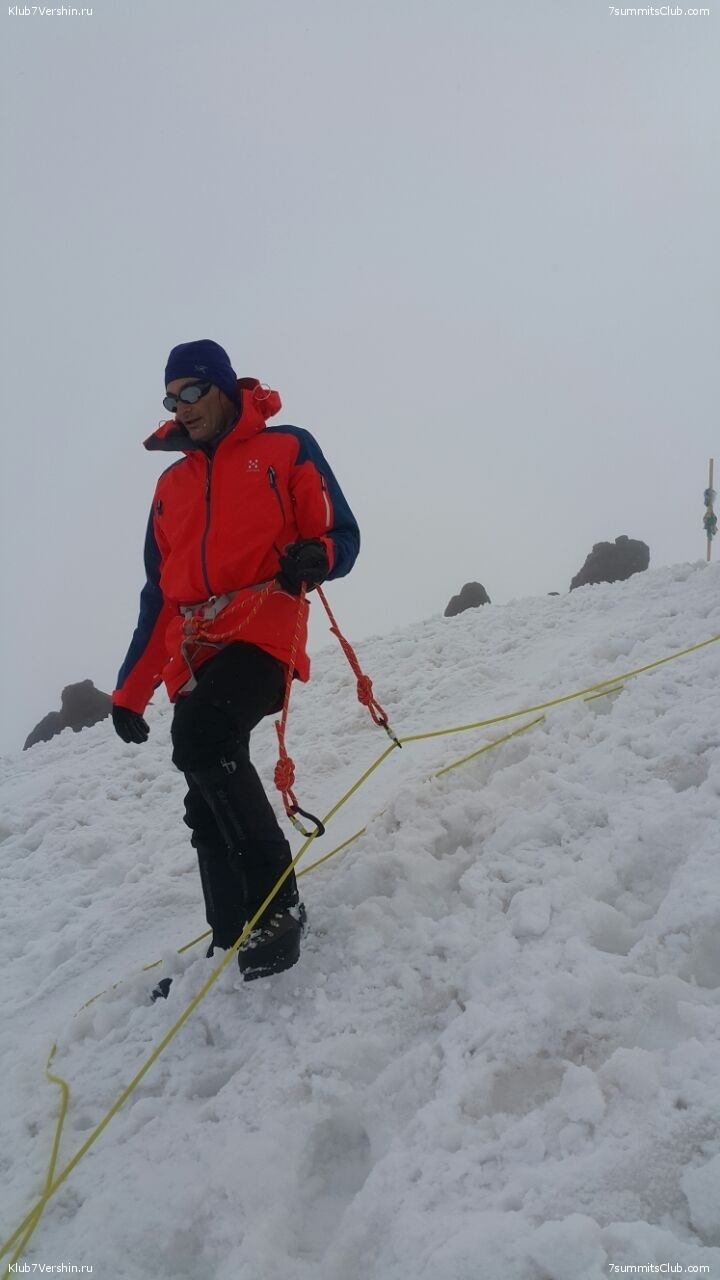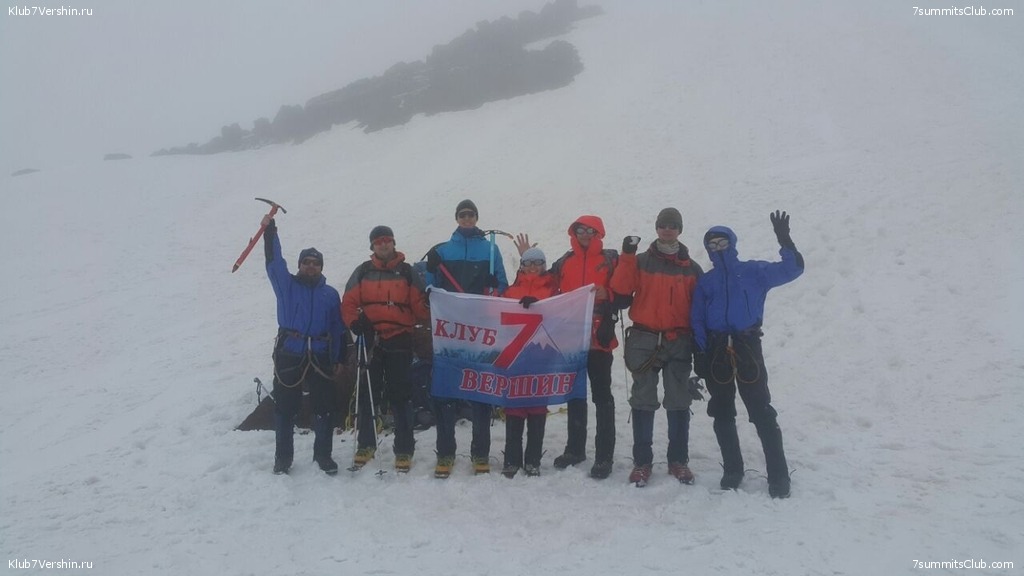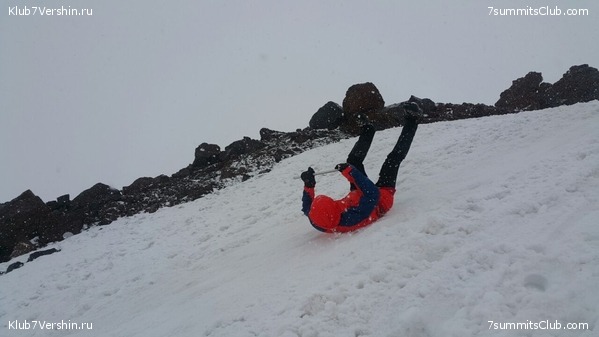All news - Page 240
Lenin Peak. Congratulations to Natalia Kurgapkina for climbing to the summit !!!
Lenin Peak.
This year, climbers of the 7 Summits Club took part in four expeditions to Lenin Peak. Two have already been completed and two are underway. We wish the participants a successful ascent and safe descent! Congratulations to Natalia ...
This year, climbers of the 7 Summits Club took part in four expeditions to Lenin Peak. Two have already been completed and two are underway. We wish the participants a successful ascent and safe descent! Congratulations to Natalia Kurgapkina - the first our climber in this season that reached the summit!
Summit! Group of Andrey Berezin climbed the summit of Elbrus
Elbrus.
Hello! This is a of guide Seven Summits on Elbrus Andrey Berezin. Today we climbed the summit. Our whole team has climbed to the western peak of Elbrus, 5642 meters. The weather was beautiful today. The previous days were thunderous. ...
Hello! This is a of guide Seven Summits on Elbrus Andrey Berezin. Today we climbed the summit. Our whole team has climbed to the western peak of Elbrus, 5642 meters. The weather was beautiful today. The previous days were thunderous. Today, on the slopes of Elbrus there was about 350 people. Record? That's what we calculated during the climb.
The expedition ends. Alpamayo climb did not take place due to the injury of one of the guides
Hello! This Alexander Abramov, the mountain Alpamayo program. Today, on the way to our camp, one of Peruvian guides was injured from a fall he hurt his leg, possibly a broken tibia .... Because of this, we have stopped the climb. Now ...
Hello! This Alexander Abramov, the mountain Alpamayo program. Today, on the way to our camp, one of Peruvian guides was injured from a fall he hurt his leg, possibly a broken tibia .... Because of this, we have stopped the climb. Now the rescue work continues. Danger to life is no guide. But climbing on Alpamay canceled. We go back without summit.
Ludmila Korobeshko at the top of the Matterhorn!
A dream fulfilled: Ludmila Korobeshko with Alexander Lastochkin climbed Mount Matterhorn!
Summit! Team of Alexander Abramov stay on the top of Nevado Pisco
Hello! Alexander Abramov sends information from the top of theMount of Nevado Pisco. We are right in the heart of the Cordillera Blanca, the most famous Peruvian mountains. In fact, the summit is luxurious. We went here for 9 hours, quite ...
Hello! Alexander Abramov sends information from the top of theMount of Nevado Pisco. We are right in the heart of the Cordillera Blanca, the most famous Peruvian mountains. In fact, the summit is luxurious. We went here for 9 hours, quite hard physically, exhausting and relatively difficult ascent. 12 people climbed to the top: three Peruvian guide, I - Abramov and eight Russian members of the expedition. There was no wind, that's amazing. Around we have a perfect view, absolutely at all mountain of Northern Peru. So far, everything is fine, four days later our team will be climbing the most beautiful mountain in the world - Alpamayo. From here we can see it, too. 7 Summits Club as always on top. Forward and upward!
Bye!
Summit. Mont Blanc was climbed by our mountaineers
Kaliningrad boys Alexander and Yuri successfully reached the summit of Mont Blanc. Our congratulations! This success was possible through responsive leadership of our guide.
Kaliningrad boys Alexander and Yuri successfully reached the summit of Mont Blanc. Our congratulations! This success was possible through responsive leadership of our guide.
Summit! An international team climbed Mount Elbrus
Elbrus.
Hello! It speaks Andrey Berezin a guide of the Seven Summits Club. Today our group climbed to the top of Mount Elbrus. Ascent time: at 6:30 am we were on the top. A team of 9 people (3 persons from South Africa) and three guides ...
Hello! It speaks Andrey Berezin a guide of the Seven Summits Club. Today our group climbed to the top of Mount Elbrus. Ascent time: at 6:30 am we were on the top. A team of 9 people (3 persons from South Africa) and three guides reached the summit. The weather was surprisingly good, we caught the window, which was just for 3-4 hours. We went at this time. Now the whole group came down, it is now in the valley .... Terskol. We celebrate our success and we congratulate all the participants.
Photos from the ascent on Kazbek from the Latvian group
July 27th the top of Mount Kazbek was reached by the 7 Summits Club by a team, consisting of citizens of the Republic of Latvia. We all congratulated them on the successful ascent. And heroes of Kazbek sent us some photos to ...
July 27th the top of Mount Kazbek was reached by the 7 Summits Club by a team, consisting of citizens of the Republic of Latvia. We all congratulated them on the successful ascent. And heroes of Kazbek sent us some photos to illustrate their expedition. It's obvious that everything turned out, all participants are satisfied or even happy. So it should be, because we go to the mountain for happiness!
Summit! Vladimir Kotlyar with the group reached the top
Elbrus.
Hello everyone! There is a guide of the P.-Cult-Ura group Vladimir Kotlyar. Today we went to the top, the weather was excellent. All together went down later. And now we are in Terskol and will celebrate this thing ... ...
Hello everyone! There is a guide of the P.-Cult-Ura group Vladimir Kotlyar. Today we went to the top, the weather was excellent. All together went down later. And now we are in Terskol and will celebrate this thing ...
Alexander Abramov from Peru: our Alpamayo expedition begins
Alexander Abramov: All Alpamayo team arrived in Lima. We partake of the latest creature of comforts. The best restaurant in the capital of Peru - Rosa Nautica. And there was a meeting with the chief guide Eric. All participants have ...
Alexander Abramov: All Alpamayo team arrived in Lima. We partake of the latest creature of comforts. The best restaurant in the capital of Peru - Rosa Nautica. And there was a meeting with the chief guide Eric. All participants have fun and try to rebuild the biological time. The difference with Moscow - 6 hours. Tomorrow at 4:40 am we go to Huaraz ...
The international team of Andree Berezin is at the LeapRus refuge. Many photos
Elbrus.
Hello! Here is a guide of Seven Summits Andrei Berezin from Elbrus. Today our group climbed to the refuge. We went on a snowy training, climbed to 4200. It was sunny in the morning, clear. By the afternoon storm started ...
Hello! Here is a guide of Seven Summits Andrei Berezin from Elbrus. Today our group climbed to the refuge. We went on a snowy training, climbed to 4200. It was sunny in the morning, clear. By the afternoon storm started and we are the last part of the way to the shelter fled because as already pinched and pricked. It was static electricity. It is now all the weather got much better, the weather calmed down. The group now: part of the group rests, part of a group communicate with each other.
All in a good mood, all excited. Bye! Andrey Berezin, Seven Summits.
We congratulate our leader, the world record holder and simply beautiful!
The 7 Summits Club celebrates Birthday of Lyudmila Korobeshko. The entire staff, who in Moscow, who in the mountains, together and in unison said: CONGRATULATIONS! Luda - you are our pride, clever and beautiful, sport athlete and ...
The 7 Summits Club celebrates Birthday of Lyudmila Korobeshko. The entire staff, who in Moscow, who in the mountains, together and in unison said: CONGRATULATIONS! Luda - you are our pride, clever and beautiful, sport athlete and hostess. Continue to be happy and help others find happiness! New records and new heights! Health all of your relatives! Good luck in everything! Plus - a collective kiss!
Watch and envy! Who has still such a boss?
Today in our office
Vladimir Kotlyar lead an acclimatization outings with a group of Phys-Cult-Ura
Elbrus.
Today, the group has made acclimatization outing to shelter Eleven. But they decided to walk a little taller, approached the stele Airborne troops of Russia, which is set in 2010 in honor of its 80th anniversary. Yesterday, the group was on ...
Today, the group has made acclimatization outing to shelter Eleven. But they decided to walk a little taller, approached the stele Airborne troops of Russia, which is set in 2010 in honor of its 80th anniversary. Yesterday, the group was on the acclimatization to the Observatory...
SUMMIT! Two members of the Sergei Semykin team successfully reached the top of Mount Elbrus
Elbrus.
Today two members of the group of Sergei Semykin climbed Mount Elbrus. Everything was good, they had already descended. One participant refused to go climbing, that is, he showed wisdom. In the evening, the climbers were awarded ...
Today two members of the group of Sergei Semykin climbed Mount Elbrus. Everything was good, they had already descended. One participant refused to go climbing, that is, he showed wisdom. In the evening, the climbers were awarded certificates of climbing ... ..
New arrivals in the Alps: Mont Blanc and Matterhorn
Today, 29 July, the 7 Summits Club starts new alpine programs for the two groups. The first group plans to climb Mont Blanc. Today, they meet with their guide and start working on the standard program. Guys came by car from ...
Today, 29 July, the 7 Summits Club starts new alpine programs for the two groups. The first group plans to climb Mont Blanc. Today, they meet with their guide and start working on the standard program. Guys came by car from Kaliningrad to conquer the highest summit of Western Europe.
Climbing Matterhorn – it is an individual program. There is only two climbers in the group : a client and a guide. In the role of client it will be a woman again, this time it's Ekaterina Klenowa. Recently she had a birthday, and she decided to make a gift for herself: a climb a summit, which is the dream of every climber - on the Matterhorn.
At this time all participants are in Chamonix (including Ekaterina), enjoy the mountain air of the French Alps before the upcoming feats. They will spend a couple of days here in the acclimatization.
Summit! Group of Andrey Berezin was on the top at 7:30 in the morning! Now all having rest at the valley
Elbrus.
Hello! Here is a guide the 7 Summits Andrey Berezin from Elbrus. Today, all members of our group climbed to the top of Mount Elbrus. The weather was beautiful today, which made the ascent doubly enjoyable. We saw great views from the ...
Hello! Here is a guide the 7 Summits Andrey Berezin from Elbrus. Today, all members of our group climbed to the top of Mount Elbrus. The weather was beautiful today, which made the ascent doubly enjoyable. We saw great views from the top of Mount Elbrus all around. We climbed to the top at 7:30 am. It is early enough for Elbrus climb, but our group was very strong. The group is now resting in Terskol. Tomorrow we have a day of sightseeing here. Everyone is happy and satisfied. All congratulations! Andrey Berezin ...
Summit! Colorado Group successfully made a Ñross of Elbrus
Elbrus.
Yesterday, July 27, a group named "Colorado" under leadership of the 7 Summits Club guide Sergey Larin (there are 5 Americans in the group) climbed to the Western peak of Elbrus. And three of them are also on the top of the ...
Yesterday, July 27, a group named "Colorado" under leadership of the 7 Summits Club guide Sergey Larin (there are 5 Americans in the group) climbed to the Western peak of Elbrus. And three of them are also on the top of the Eastern Peak later. And all team went down to the North Side, thus making the "Cross of Mount Elbrus". Hooray! Now the whole group resting on the of Glade Emanuel.
A good news from Zermatt: there is the first our ascent on Matterhorn of the season
The first of the season successful climbing the 7 Summits Club on Matterhorn. Some photos on the topic. Yesterday Irina Podgornova with a guide climbed to the "mountain of mountains", the legendary Matterhorn. Now we can enjoy a few ...
The first of the season successful climbing the 7 Summits Club on Matterhorn. Some photos on the topic.
Yesterday Irina Podgornova with a guide climbed to the "mountain of mountains", the legendary Matterhorn. Now we can enjoy a few pictures from the climb. We will wait for a detailed report!
Summit! Our group reached the summit of Mount Kazbek
Today our Latvian group started the climb from the Meteorological station at night. And in the morning, when the overall favorable weather conditions, the summit Kazbek was achieved by all members of the group. Congratulations on your great ...
Today our Latvian group started the climb from the Meteorological station at night. And in the morning, when the overall favorable weather conditions, the summit Kazbek was achieved by all members of the group. Congratulations on your great success! New summits and new achievements!
Day of acclimatization for a group of Andrey Berezin
Elbrus.
Hello! It is a guide of the Seven Summits Club Andrey Berezin from Elbrus. Today, our group went to the Pastukhov Rocks, it was an acclimatization day. Yesterday we passed snow-ice sessions, practiced skills to use an ice ax and moving on ...
Hello! It is a guide of the Seven Summits Club Andrey Berezin from Elbrus. Today, our group went to the Pastukhov Rocks, it was an acclimatization day. Yesterday we passed snow-ice sessions, practiced skills to use an ice ax and moving on fixed ropes. Tomorrow we have a day of rest, we have a rest tomorrow preparing for the assault.
It was only the day after tomorrow we plan to go climbing. Bye! Andrey Berezin...





